In the scene where Harrison Ford as Indiana Jones was chasing Marion Ravenwood and runs into a bad guy, he was supposed to take him down in a long drawn-out fight. However, Ford had a cold and didn’t want a long fight scene. So, he pulled out his gun and took him down in one shot, becoming a very memorable scene in the film.
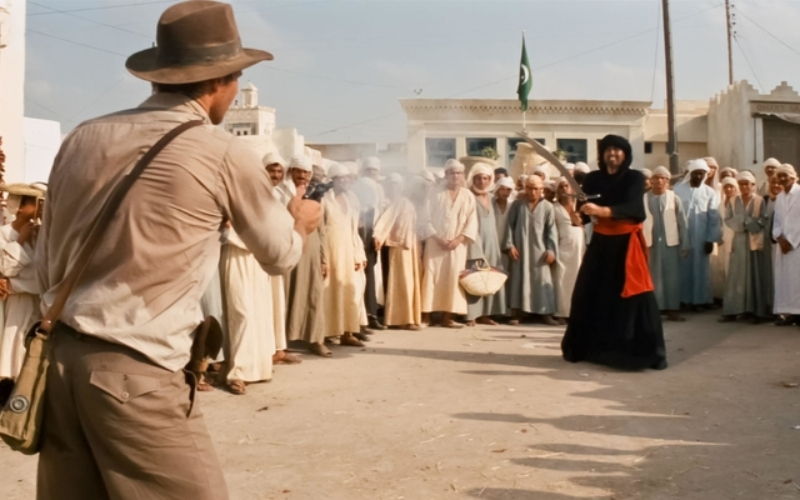
The film was the first film in the Indiana Jones film franchise. Harrison Ford plays archaeologist Indiana Jones, who fights a group of Nazis searching for the Ark of the Covenant. It was nominated for eight Academy Awards in 1982.
Earnings
Instead of a salary, Tom Hanks agreed to a portion of the film’s earnings. Considering that the movie took in more than 677 million dollars, this turned out to be a brilliant move for Hanks. Tom Hanks won his second Best Actor Academy Award for his performance in the film, becoming only the second actor to win the award for two consecutive years. He previously won the award for his performance in Philadelphia.

The film’s director, Robert Zemeckis, also saw great success, and to date, Forrest Gump remains his highest-grossing film. Even when compared with his other films like Back to the Future and Castaway.
Tricks
That Ping-Pong scene? You probably didn’t notice that this was one of the many brilliant sneaky tricks in the movie. Computers were used to create the ball being hit back and forth in the scene, as well as many other illusions in the film. In reality, Hanks and his opponent were just hitting the air. It was one of the most iconic scenes in the film, as we got to witness Forrest gaining fame in his army years.

Like the rest of the movie, the scene also had some historical significance, as “ping-pong diplomacy” was really a part of former President Nixon’s plan to ease tensions with China. When Forrest first learns to play ping-pong in the hospital, he is told that the trick is to “keep his eye on the ball” by another soldier. After that moment, whenever he plays ping-pong, he never blinks.
The Lead Role
A few well-known actors turned down the role of Forrest Gump. Tom Hanks was given the role after John Travolta, Bill Murray and Chevy Chase did not accept, and they definitely had regrets about it later on. John Travolta turned down the role in order to film Quentin Tarantino’s masterpiece Pulp Fiction, for which he was nominated for the Academy Award for Best Actor.

While Chase might be still kicking himself, Travolta certainly made the right decision. The film revived his career, put him back on the A-list, and subsequently landed him roles in other films. Still, Forrest Gump dominated the 67th Academy Awards and Travolta surely had his regrets. Who doesn't love Pulp Fiction though?
Sally Field
Sally Field, who you may remember as Forrest Gump’s mother, was actually only 10 years older than Tom Hanks at the time, despite their seemingly physical age difference. That's the magic of a grey wig and some skillfully applied makeup. In fact, just a few years prior to Forrest Gump, Sally Field, and Tom Hanks starred in the 1988 film Punchline, where Sally acted as Hanks’ love interest.

We wonder what poor Sally must have thought when she was called to reunite with her former on-screen love interest. We suppose it makes sense, seeing as Field is the mother throughout the film, starting from when Gump was just a young boy all the way to him being a full-grown man.
Tom Hanks
Tom Hanks was cast in the film instead of Chevy Chase. Hanks embodied Gump’s character perfectly and it’s a good thing for the film’s sake that he was cast. Hanks was not only awarded by being cast in an award-winning film, but it also opened the door for him to become a dramatic actor. The role was a significant turning point for Hanks, to say the least.

While Tom Hanks was already pretty big at the time of the film, his career skyrocketed after that. The actor went on to nab up roles in pretty much everything, from heavy and action-packed dramas like the Spielberg classic Saving Private Ryan to animated childhood favorites like Toy Story and even some of our most beloved rom-coms like You've Got Mail.
Blue Checkered Shirt
If you thought you were having Déjà vu every time Forrest was wearing a blue checkered shirt, think again. We see Forrest grow up in front of our eyes throughout the film. We see him as a child, then as a young teenager, at the end of high school, and finally as an adult. And that blue checkered shirt is with him every step of the way. But there's a reason for that.

Gump wears this shirt during every age transition that it starts to become symbolic. When you find something that is fitting for you, you stick to it. At the end of the film, we see Forrest Gump’s son, Forrest Jr. also wearing a blue plaid shirt.
Closed eyes
Did you notice that in every picture taken of Forrest Gump throughout the movie, he had his eyes closed? While it might look a little funny, there is a reason why this keeps happening, and it had to do with Hanks and the director formulating a very believable character with strange quirks and habits. According to Hanks, he was trying to convey someone focusing hard on being "normal."
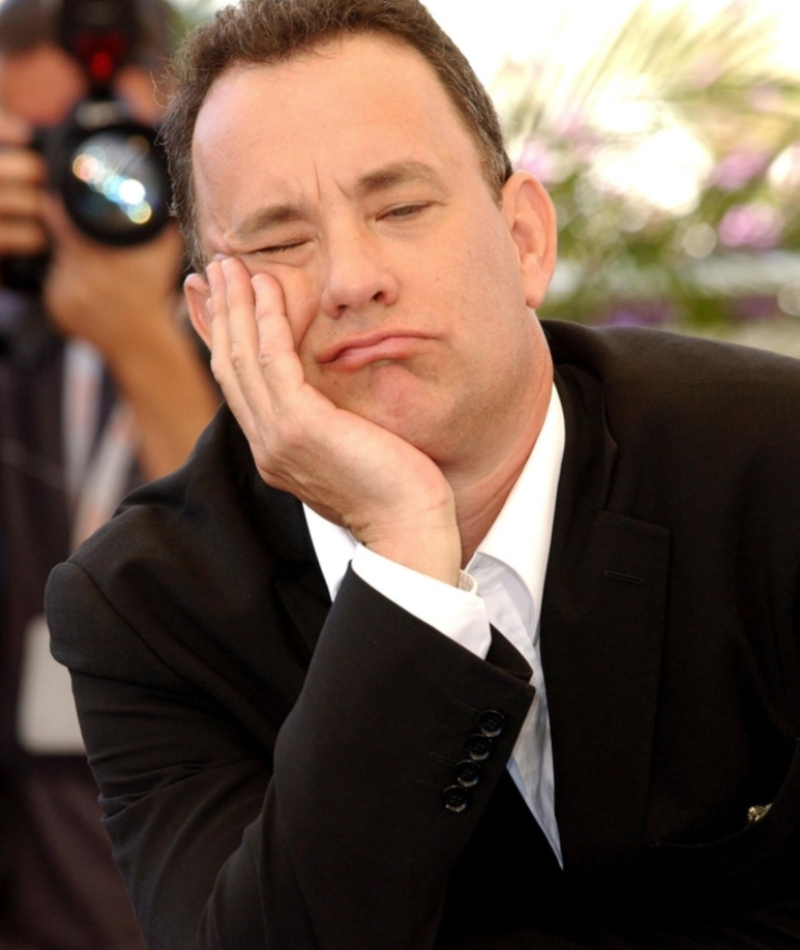
The quirky character trait was ultimately Hanks' decision. This, like many of the small details we see throughout the film, is just an example of another easter egg that we notice throughout the movie. It's also a testament to the actor's character building.
Robin Wright
Robin Wright gained critical acclaim for her performance as Jenny, Forrest’s childhood friend, and love interest. She received nominations for a Screen Actors Guild Award and a Golden Globe. The actress first gained attention for playing Kelly Capwell in the NBC Daytime soap opera, Santa Barbara, from 1984-1988.
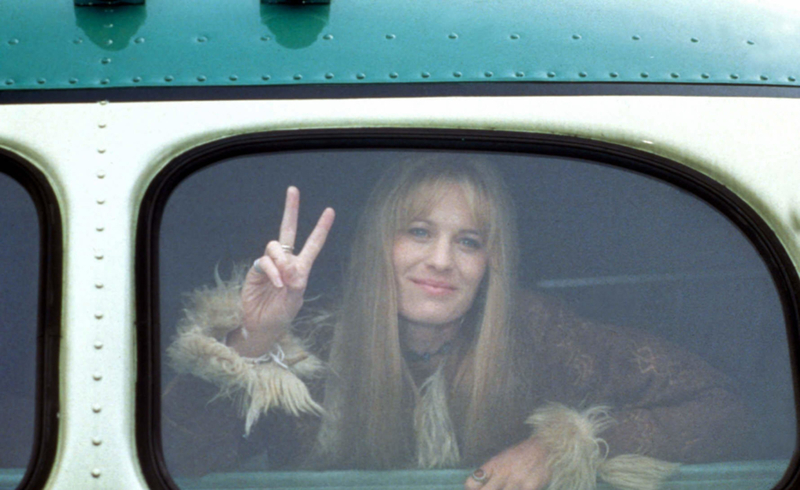
She also starred in the Netflix series, House of Cards, for which she made $500,000 per episode. Other famous actresses turned down the opportunity to play Jenny, like Jodie Foster, Nicole Kidman, and Demi Moore.
Oh, Brother Where Art Thou?
Often times, in the more physically taxing scenes of films, actors require a body double. While it's not easy to match the actors, usually the industry finds a way, especially if it's just a moment's shot. Luckily for him, they didn't have to look very far for a convincing double, they just had to check his family tree. For many of the running scenes, we actually see Tom Hanks's younger brother Jim.

Jim Hanks who, back then, was a fantastic runner, also had the advantage of sharing a resemblance to his brother (obviously). Not only does Jim play Tom Hank’s body double in Forrest Gump, due to their similar tone of voice, he has also substituted for his brother in various Toy Story video games. So when the award-winning actor is not available, he's able to pass the job on to his younger brother.
The Vietnam Scenes
While visiting in Washington, D.C., Forrest befriends activist Abbie Hoffman, who invites him to speak about his experience in Vietnam with the thousands of attendees of the anti-war protest. However, in what becomes one of the most pivotal scenes of the movie, onlookers are unable to hear what Forrest says because his microphone is unplugged.
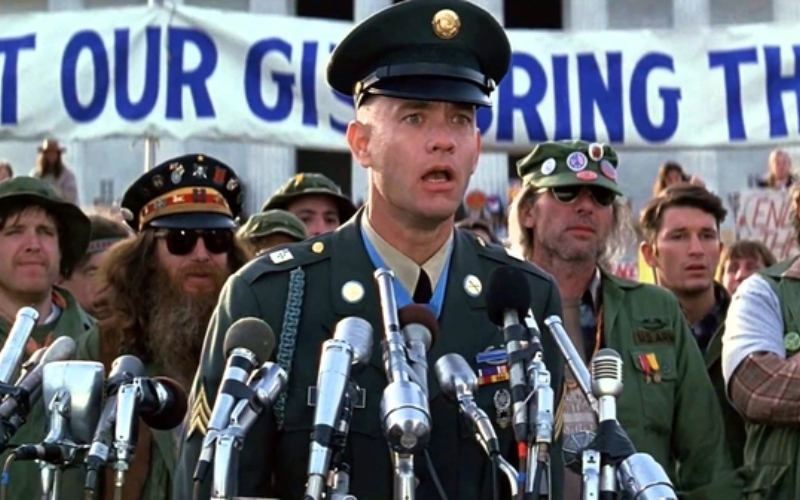
So, this is what Forrest Gump really said when he spoke at the Vietnam Rally in D.C: “Sometimes when people go to Vietnam, they go home to their mommas without any legs. Sometimes they don’t go home at all. That’s a bad thing. That’s all I have to say about that.”
"People Call Me Forrest Gump"
The iconic line that people love so much- “My name is Forrest Gump. People call me Forrest Gump” wasn’t originally in the script. Tom Hanks ad-libbed the line and the film’s director Robert Zemeckis loved the line and kept it in. Forrest says this line in the scene where he introduces himself to Bubba for the first time. We can’t imagine the film without it.

Of course, if anyone knows anything about movies, that line is clearly a homage to the James Bond line, "They call me Bond, James Bond." As much as we love Gump for his many traits such as his kind heart, and great work ethic, he lacks that certain suave Bond quality. Which, in fact, is what makes the line so funny and memorable!
Haley Joel Osment's Debut
The 90s child actor Haley Joel Osment was everyone's favorite on-screen kid for years. His endearing face landed him countless roles, many of them even dramas and thrillers (how can anyone forget The Sixth Sense?) And it all started with Forrest Gump. Osment was only six-years-old when got the chance to play Forrest's son in this Academy Award-winning film, and boy was he adorable!
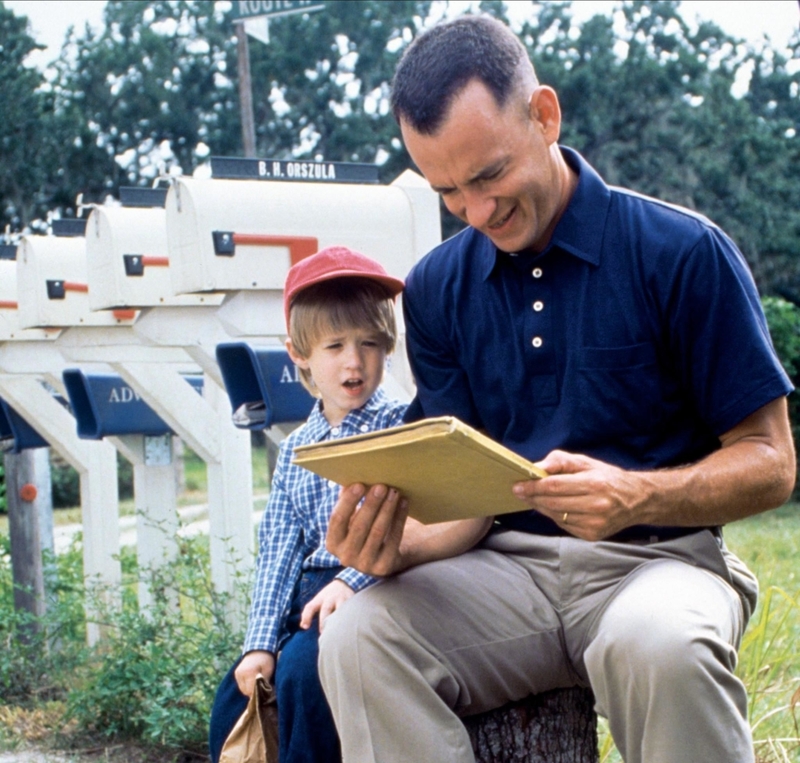
Years later he remarked on what it was like to play Tom Hanks' son. The actor, who is now 32 (and has a majestic beard) said that Hanks was was “a great first cinema Dad.” He sure was everyone's favorite on-screen son. Haley went onto play a string of films at a very young age. The good news, he's still acting and even graduated from Tisch's School of the Arts.
Tourists Make Excellent Reporters
One lucky tourist got the chance to star in what would become an American classic. When Tom Hanks visited Washington D.C to receive his medal of honor, the reporter who interviewed Gump wasn’t really an actor.

He was a tourist who was asked to read the script. The tourist was from Atlanta and had been visiting D.C. with his wife that day. Producers saw him and asked him to read the lines. Apparently, he read them quite well as they ended up taking him for the film.
Playing An Amputee
Gary Sinise, who played cocky Lieutenant Dan Taylor isn’t an amputee in real life. However, in the film, his character is wounded in the Vietnam war and loses both of his legs. He is shown prior to the injury, as an able-bodied officer, and after the injury, in a wheelchair as a double amputee. Special effects were used to virtually erase Sinise's legs in the editing room, with computer assistance, and with props. Sinese also wore blue fabric on his legs to make it easy to digitally remove them.

Sinese was shocked by the film’s effects the first time he saw the finished film. He said of director Robert Zemeckis and special-effects supervisor Ken Ralston “They were constantly working it out, making sure we were shooting it the right way so we could figure out the effect later on. When I saw it later I thought, 'Those were really stunning, flawless effects.'” In summary, the effects make it hard to believe that Sinese isn’t actually an amputee.
Actual Footage
When Forrest receives a Medal of Honor, it looks pretty real. How did they do it? Creators actually used real footage of none other than Sammy Davis. The footage shows him receiving a Medal of Honor from President Lyndon B Johnson. Hanks’ head was digitally placed onto Davis’ body to make it look realistic. The real Sammy Davis joined the Army out of high school in 1965.
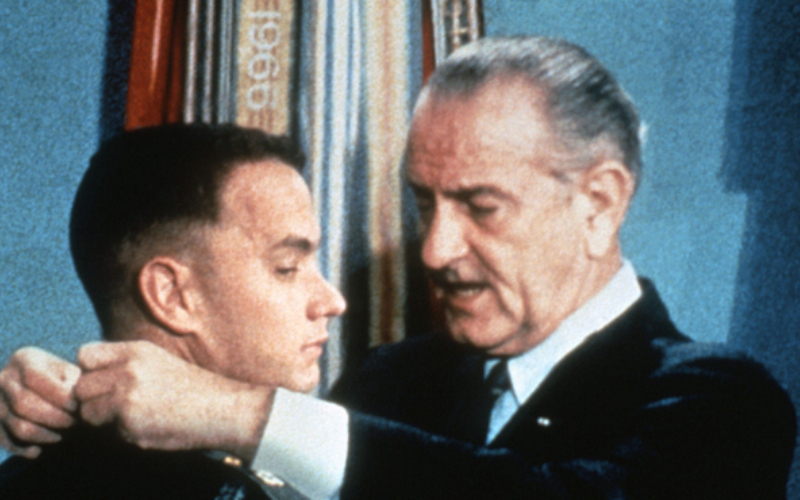
He was assigned to the 4th Artillery, following his father who had been an artilleryman in WWII, and after completing training he requested to go to Vietnam. On November 19th, 1968, exactly a year and a day after the nightlong firefight at Cai Lay, President Lyndon B Johnson awarded Davis with the Medal of Honor.
Ice Cube As Bubb?
Rumors have it that Ice Cube and Dave Chappelle turned down the opportunity to act as Bubba, Gump’s friend in the film. Apparently, the rapper and arguably the most celebrated lyricist, Ice Cube, passed on the role because he didn’t want to portray a dumb character. The legendary comic, Dave Chappelle, also said no to the role but later did costar with Hanks in You’ve Got Mail.
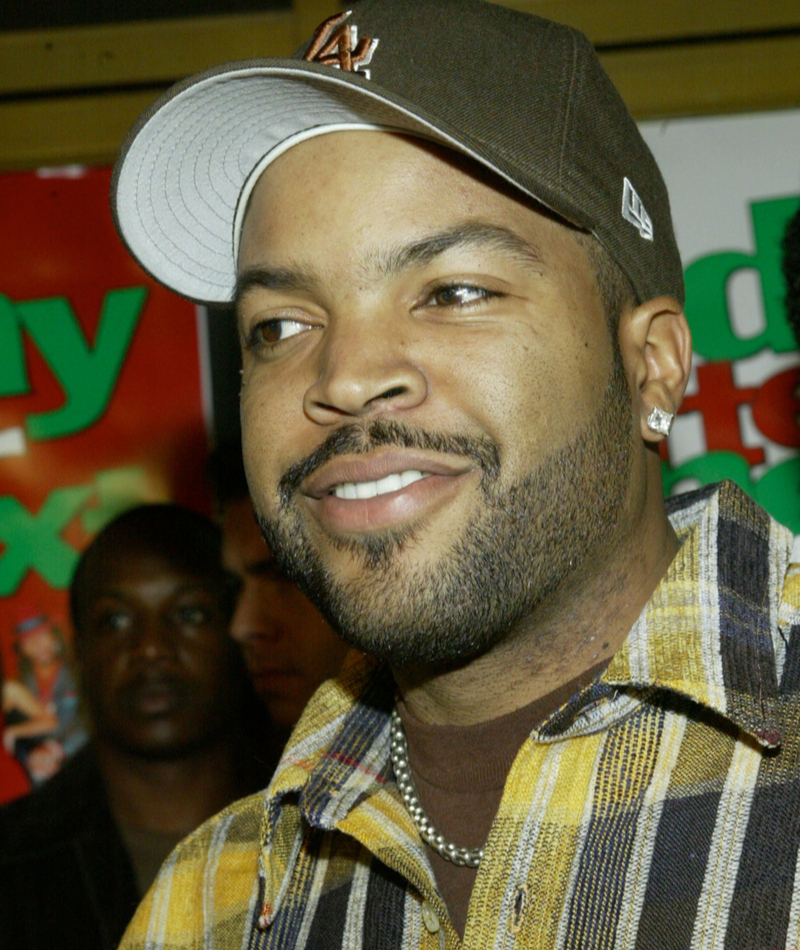
Mykelti Williamson accepted the role, and the rejectors subsequently regretted turning it down, thinking that the film wasn’t going to be that successful. While they may have expressed some soreness over the missed opportunity, both Ice Cube and Chappelle have both led incredibly successful careers. You can't do it all!
Thank You Very Much
Thought Elvis Presley’s voice sounded like Presely himself? Turns out it the killer impression was recorded by Kurt Russell in the film. According to some people, he didn’t receive credit for his work. Still, he was clearly noticed. There was a reason why Russel was picked for this part.
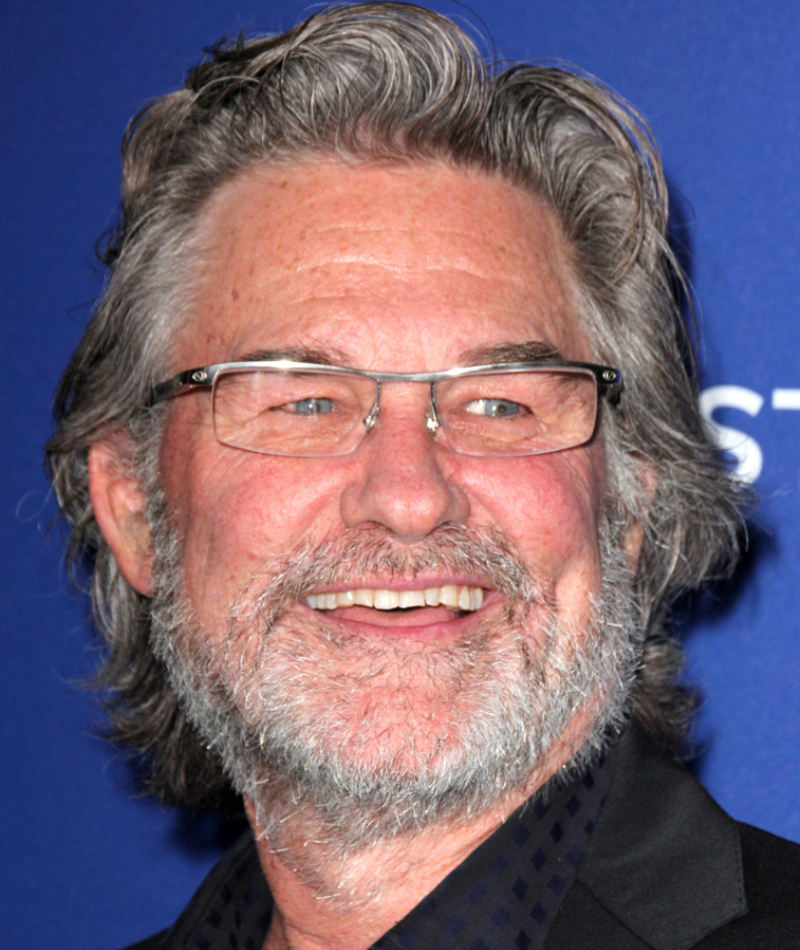
The actor starred in the 1979 TV film, Elvis, playing the part of the king of rock and roll and later earning an Emmy nomination for his performance. So, although Russell didn’t receive credit for the film, we can safely assume it was him considering that long resume of Elvis experience.
Quote The Truth Where You Find It
The famous line: ” I just put one foot in front of the other. When I get tired I sleep. When I get hungry I eat. When I have to go to the bathroom I go” was a real line quoted by a 16-year-old boy who ran from New Jersey to San Francisco to support the American Cancer Society. The 16-year-old, named Louis Michael Figueroa ran across America on foot while in his sophomore year of high school in New Jersey.

He had promised a 10-year old boy with cancer that he would run across America for him, in order to give him hope. The run took him 60 days and crowned him the fastest and youngest person to run across America. Fourteen years later, Louis once again took off running, this time inspired by his brother who was diagnosed with AIDS. During this run, he himself was battling Leukemia.
A Long Day
During the scene in which Robin (as Jenny) performed in a nightclub, she was feeling very ill. She powered through the scene which took about 24 hours of filming. On the plus side? She was able to perform her own song. On the downside, she was naked and holding a guitar for hours on end.
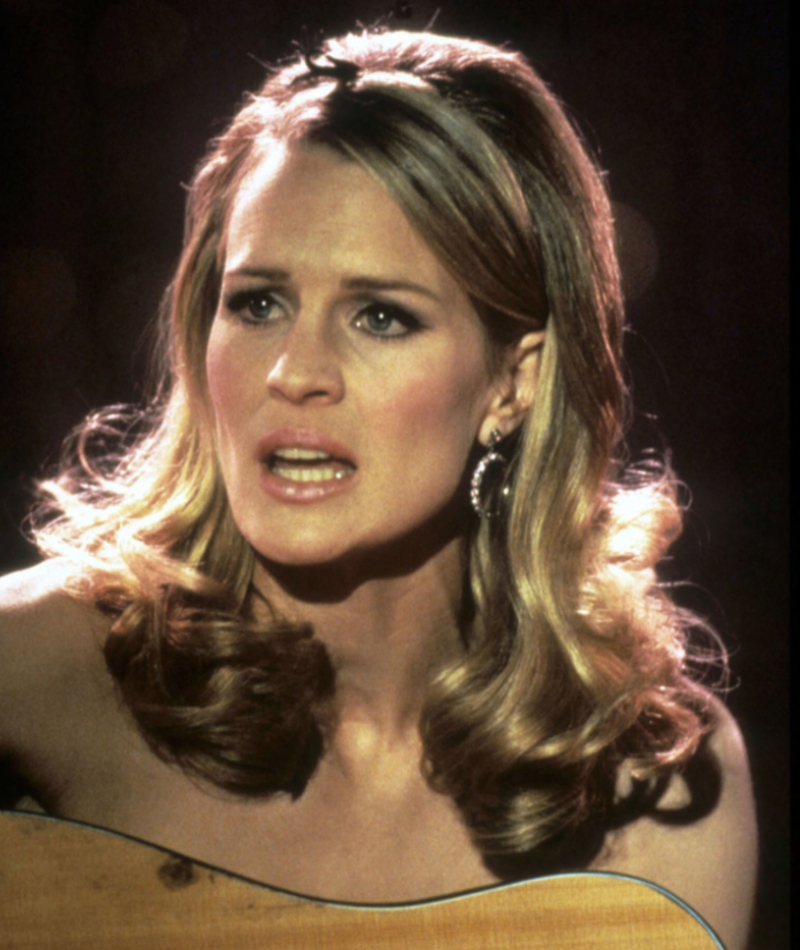
The result? A heart-beaking moment showing how Jenny's career didn't quite turn out the way she wanted it to. Heckled by brutes in the audience, Gump steps up shows them who's boss. Jenny is sadly humiliated by the whole thing.
Running With A Cold
Sometimes you just have to call in sick. Not Tom Hanks though. The actor was suffering from a bout of flu when he shot the football running scene, but chose to pass on the bed rest. Well, we are sure he tried but unfortunately, due to scheduling issues, for Tom Hanks, this wasn't an option. He still managed to shoot this iconic scene like the professional he is.

Pity his brother wasn't available for this shot though. Guess it was too much of a full-on, seeing it all type of shot that Jim just couldn't help him this time. Let's hand it to Tom, he did a swell job.
Picture Perfect
The painting “Girl With a Black Eye” (also referred to as “The Shiner) by Norman Rockwell inspired the scene in which Forrest sat outside of the principal's office waiting for his mother. The painting appeared on the cover of The Saturday Evening Post published May 23, 1953.

It was Rockwell's 277th overall out of 322 total paintings that were published on the cover of the Saturday Evening Post. Rockwell said of model Mary Whalen that she was the best model he ever had. She ended up appearing on three Saturday Evening Post covers.
The Bench That Got Benched
That Forrest Gump bench is probably just as iconic as the whole movie. While it is just a bench, it just perfectly makes up the character's whole image, so you can imagine how important it was to have the right one. In fact, the producers just ended up buying it. And as you can imagine, that "prop" gained some significant notoriety ever since.

People were prepared to dish out a lot of money for that thing, which is why that the bench that Tom Hanks sat on with his box of chocolates sold in an auction in 2013 for a whopping $25,000. As for the set, producers kept it really authentic. For the town square scenes, they filmed them in Savannah, Georgia. In many scenes, Gump sat on a bench at Chippewa Square in Savannah, Georgia.
Character Differences
There are some notable differences between the novel and the film. In the film, Forrest is seen as naive, impulsive, and more passive. This is seen in the chocolate scene. However, Gump’s character isn’t like this in the book. Groom’s Gump is more aware of his surroundings, saying about himself in the book’s opening that people treat him badly because he’s an idiot.
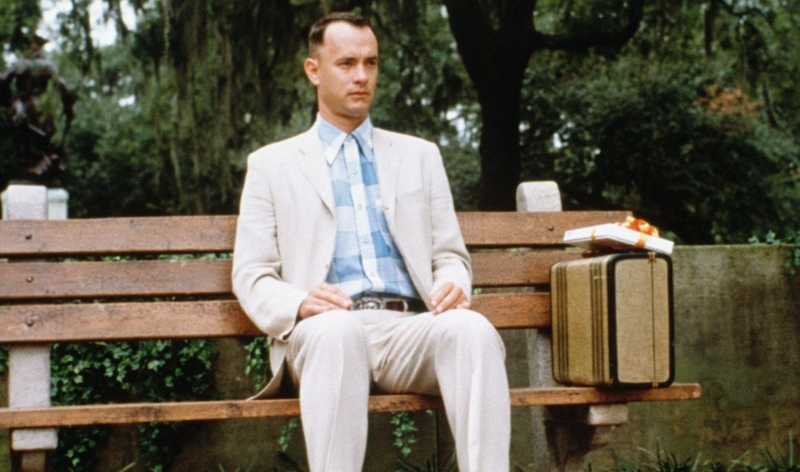
Groom’s Gump is also much bigger than Tom Hanks, being described as a man who is 6’6 and 240 pounds. Other things left out of the film include Forrest becoming an astronaut, running for the U.S Senate, and participating in a chess tournament.
The Doors
Music of the band “The Doors” was featured often in the film, playing six of its songs throughout the movie. Director Robert Zemeckis was a big fan of the band and felt that their sound was perfect for the tone as it evoked the wild feeling of the era. He was completely right, we couldn't imagine the film without their music.

The American rock band was formed in Los Angeles in 1965, with Jim Morrison as the band’s vocalist. While their career ended almost 45 years ago, they remain popular to this day and have sold over 100 million albums worldwide.
Family Bus Ride
Tom Hanks’ daughter Elizabeth starred in the film as well as Zemeckis’ son Alexander. They were amongst the school kids on the bus who made fun of Gump. Elizabeth, who is commonly called EA Hanks, has since moved on to writing. She was a staffer at Vanity Fair magazine and an associate editor with The Huffington Post.

In addition, she has written for vanityfair.com, Guardian, time.com, The New York Times, and other top US magazines. That's not the only one of Hanks' offspring that got into the entertainment industry. Colin Hanks is also a well-known actor who has starred in a string of films.
The Sequal
Winston Groom decided to write a sequel to Forrest Gump after the success of the movie. The sequel was called Gump & Co. The text in the sequel purposely contains frequent grammar and spelling errors in order to remind the reader of Forrest’s lack of education and cognitive abilities.
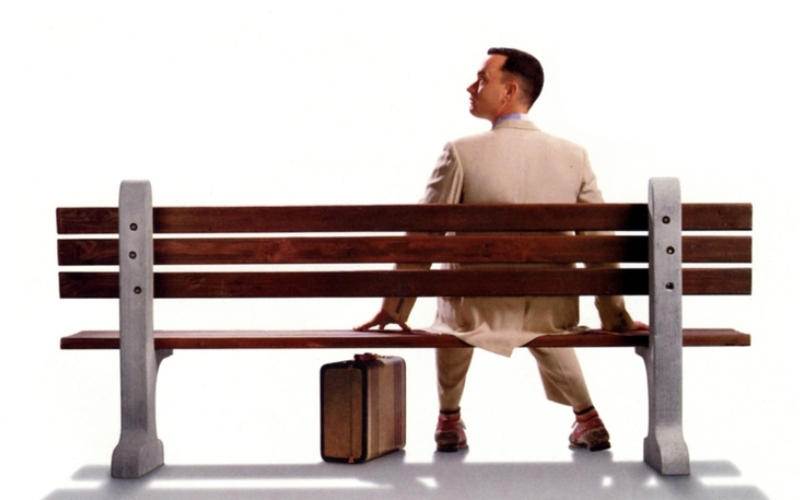
Larry King called the novel “the funniest novel I ever read.” Eric Roth later wrote a screenplay of the sequel in 2001. Will there ever be a movie sequel? It's been over 25 years since the first one came out, so it doesn't seem very likely, but who knows! Perhaps a whole new generation will soon experience the Gump.
Jenny’s Last Name
Jenny was never addressed by her last name, however, she still had one in the film. If you pay close attention, you can definitely catch it, and the name is Curran. Even though it never mentioned in the film, you can see it on the back of the envelope that Forrest mailed to her while he was in Vietnam.

It's also written on her mailbox when in her childhood home. And lastly, you will see the name written on the letters that are delivered to him in the hospital. She may have never said her full name as much as Gump, but she sure does have one!
Tom Hank’s Accent Inspiration
Director Robert Zemeckis had difficulty finding Forrest Gump’s accent, but when they heard the young actor who played Forrest as a child (Michael Conner Humphrey,)they loved it. This inspired Tom Hanks’ accent in the film. According to Hanks, Humphreys had a very deep Mississippi accent and pronounced words with a hard “g.”
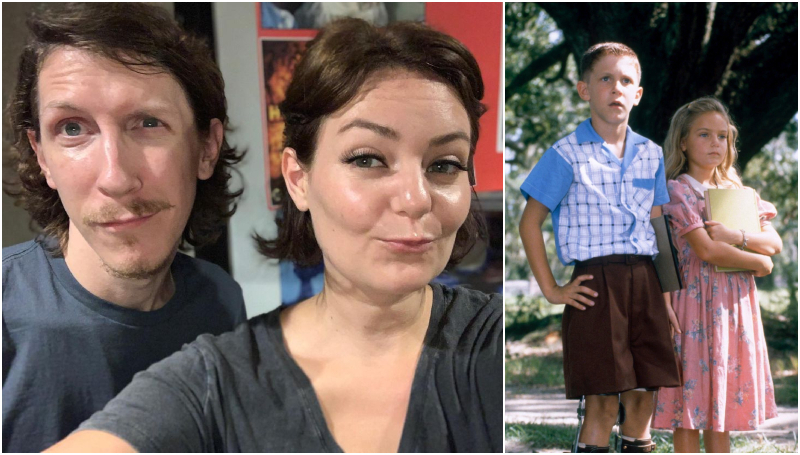
Humphreys struggled to make his accent sound like Hanks’, so Hanks decided he would try to speak more like the young boy. Hank has shared that he has hours of cassettes of himself talking with Humphreys. That's commitment.
Count Me In!
Tom Hanks signed onto the film after reading it for only an hour and a half. The film’s producer Steve Starkey said: “We sent the script to Tom Hanks because he was the only one who could play it … About an hour and a half, after he started reading it, Tom called and said, “I’m in.” From that point on, we knew we could get the movie made.”

When you know, you know. Hanks has yet to pick the wrong role throughout his entire career. Either that means has great instincts about what is the right part for him, or he can play just absolutely anything under the sun.
Historical Precision Clause
Hanks agreed to star in the film as long as historical events were as accurate as possible. The film touches upon a turbulent period in U.S history and includes many real-life events that occurred throughout the ’60s, ’70s, and ’80s. Events such as the Vietnam rally, the ping pong scene, the Black Panther Party, the Watergate Scandal, and many others.

Also included were appearances by many famous figures such as Elvis and President JFK. This makes sense, as Hanks is a known history buff, which is why he has also frequently collaborated with fellow history nerd, director Steven Spielberg on numerous grand projects involving World War II (Saving Private Ryan and Band of Brothers.)
Emotional Scenes
The film is quite the tearjerker and apparently, Tom Hanks often became emotional while playing the role of Forrest. The actor even admitted to crying during the scene where LT Dan, with his titanium legs, first introduces Forrest to his wife. You can't really blame the guy. The film is an epic journey filled with just about every human emotion.

Even producer Wendy Finerman remarked on it. In an interview, she said "I don't want to sound like a bad version of 'the child within'. But the childlike innocence of Forrest Gump is what we all once had. It's an emotional journey. You laugh and cry. It does what movies are supposed to do: make you feel alive."
An Oscar-Worthy Performance
Tom Hanks won an Oscar in 1994 for his performance in Forrest Gump. Besides that, Forrest Gump won five other Academy Awards for Best Picture, Best Director, Best Visual Effects, Best Adapted Screenplay, and Best Film Editing.
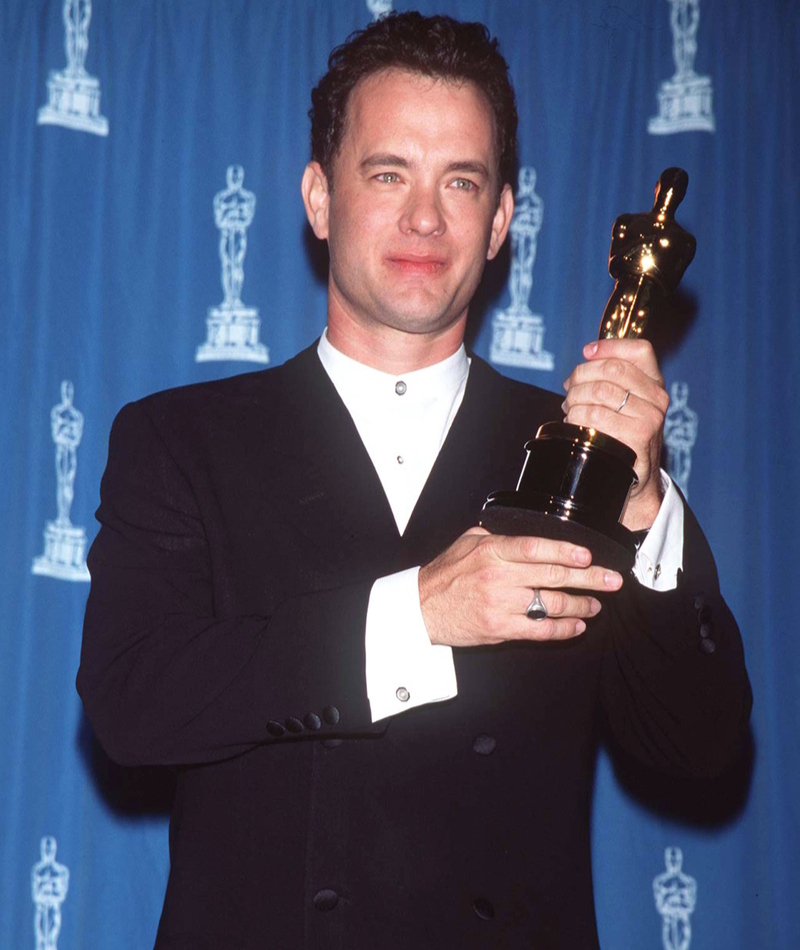
The film was also nominated for seven Golden Globe Awards and won three of them, including Best Actor-Motion Picture Drama, Best Director-Motion Picture, and Best Motion Picture-Drama. The film won various other awards as well.
Shot in Savannah
Many scenes of the movie were shot in Savannah, Georgia. Filming also took place in South Carolina, on Fripp Island and Hunting Island. This gave the film a historical and realistic look. Hunting Island was used for many of the film’s war scenes. Today, Hunting Island is one of the most popular state parks in South Carolina, welcoming more than a million visitors each year.

Ocean Creek Golf Course on Fripp Island was used as a backdrop for some of the Vietnam war scenes. Forrest Gump, Bubba, and Lieutenant Dan marched through the Fripp Island maritime forest, with mountains digitally added in the background.
A Successful Flop
Despite the movie’s eventual profit of $678 million, in the year it was released it was not monetarily successful. Even with such a profitable revenue, the film was called a "successful failure." This was largely due to the high paycheques of both the director and the lead actor, and ultimately even more crippling price tag, the distribution fees.
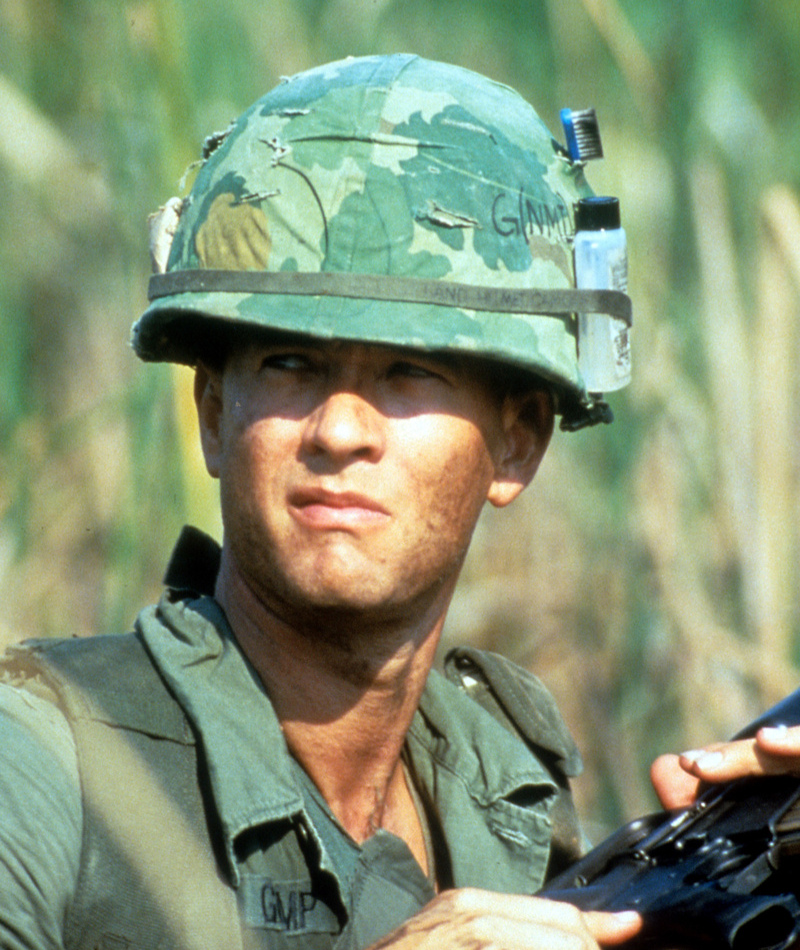
This ultimately resulted in a $62 million loss for Paramount Pictures. And that was with a $55 million budget. Some people say distribution fees were far too greedy and pocketed more than necessary. Sometimes, with a film this good, everyone wants a piece of the pie.
Many Meanings
The film begins with a feather floating through the air. There are many interpretations as to what this could mean. Some saw it as a symbol for Forrests's kind and wandering nature that is likened to a floating feather that is at at mercy of the wind.
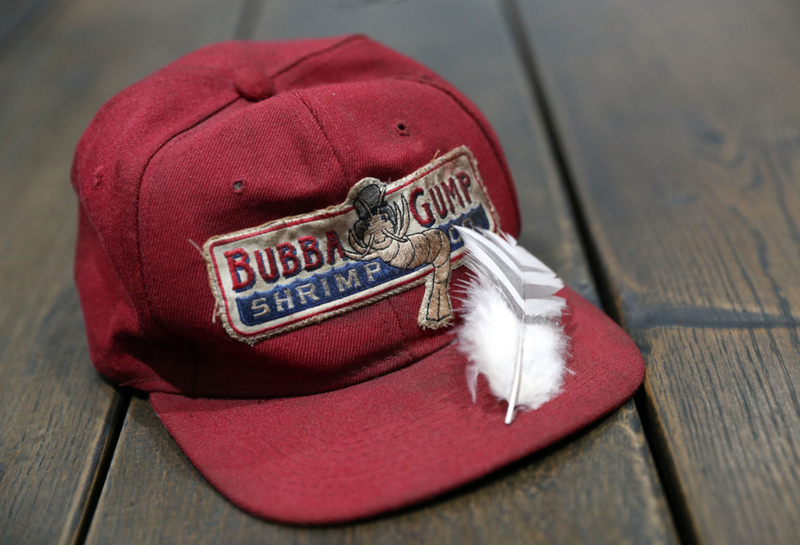
This take can even be emphasized in his line about the chocolates "you never know what you're gonna get."However you see it, it's one of the most powerful and thought-provoking scenes in cinema history and it really sets the tone for the whole film.
Mykelti Williamson Gets Type-Cast
Mykelti Williamson was lucky to get cast as Bubba in the film, however, he later had trouble getting cast in other films due to the type of character he played in Forrest Gump. Apparently, people in the entertainment industry didn’t realize that Bubba’s lip deformity was created by a prosthetic lip device that Williamson used during filming.
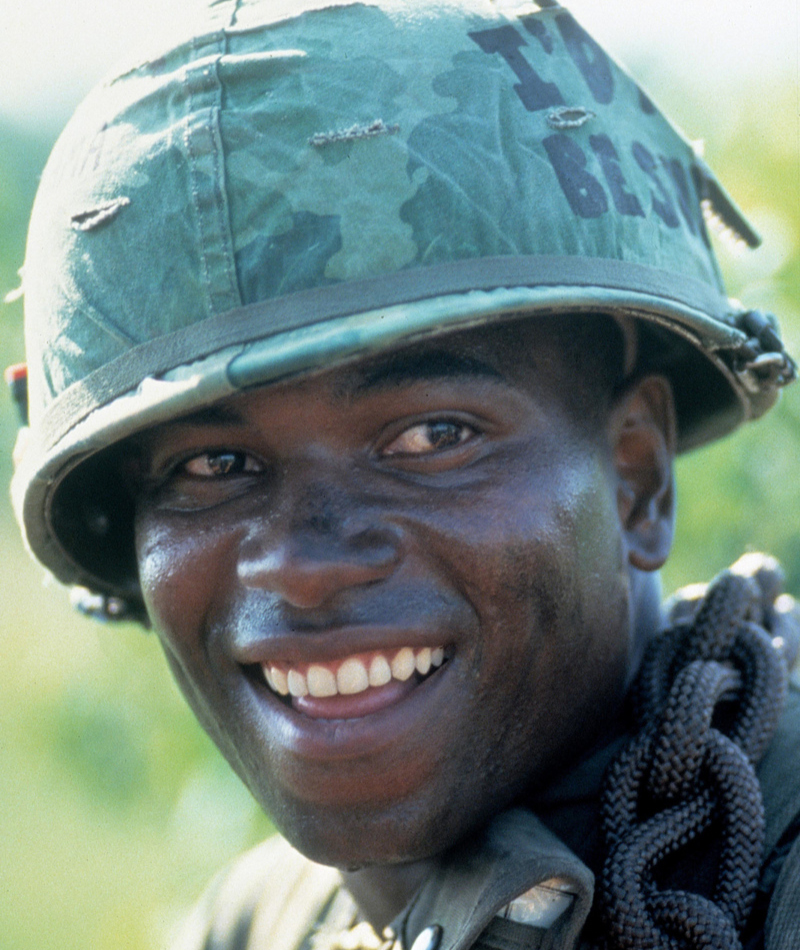
For that reason, Williamson wasn’t recognized for previous shows he had been in, despite the fact that he acted in over 10 prior to the film. He eventually landed roles in films like Heat and Con Air, but it wasn’t easy.
Dave Chappelle
Dave Chappelle joked on the Daily Show that he wasn’t a fan of the film because Forrest Gump, a character with low I.Q. was a better actor than him. Don't let Chappelle's jokes trick you. The famous comedian has a staggering IQ score of 185.

On the show with Stewart, Chappelle expressed some more negative feelings over the film, saying that it angered him seeing a man with a mental disability get so far in life when able-bodied people struggle so much. Luckily he didn't act in it!
Corner Chooses His Career
Forrest Gump was one of Michael Conner Humphreys’ only films. The young Forrest Gump eventually joined the army and quit acting. For his role in the film, he was nominated for a Young Artist Award. He received the role after attending an open casting call in Memphis, Tennessee in 1993.

Producers went in not knowing exactly what they were looking for. All they knew is that they had to see a young Tom Hanks, with his light eyes and a quirky disposition. They definitely found that in Humphreys.
Only American Music
All of the songs in the film were by American artists, as Forrest would not have accepted anything else. The film’s soundtrack was very successful, jumping from #34 to #7 on the Billboard 200 albums chart on July 30, 1994. This was definitely one of the factors that made Forrest a true American hero.
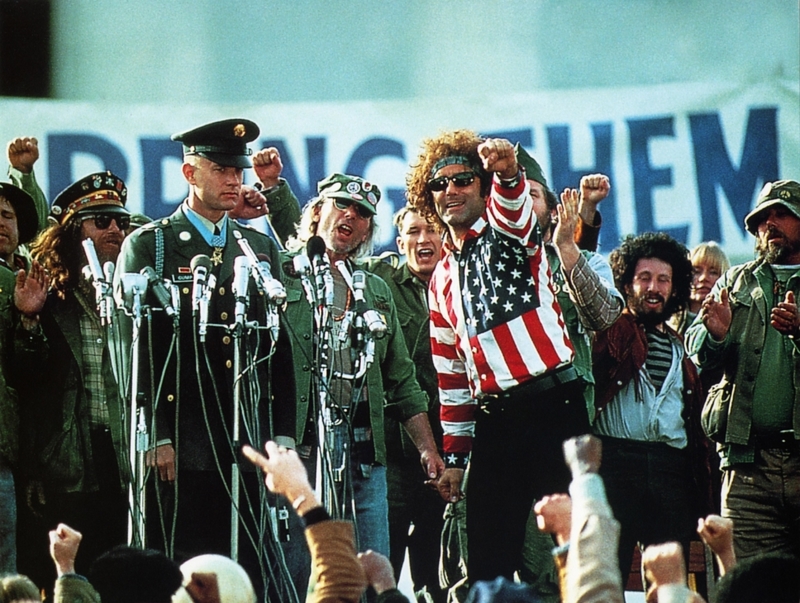
The songs kept climbing the charts. On August 6, 1994, it moved from #7 to #3 and held that position for one week. It reached its peak position of #2 on the charts on August 13, 1994, and remained there for seven weeks until September 17, 1994.
Fifteen Dr. Peppers Later…
In the scene where Forrest meets JFK at the White House along with his All-American college teammates, he drinks 15, Dr. Peppers, out of nervousness and hospitality for the food and Dr. Peppers that they get for free. He says that it is the best part about meeting the president of the U.S. When all of the teammates line up to meet the president, the president asks them what does it feel like to be an all-American.
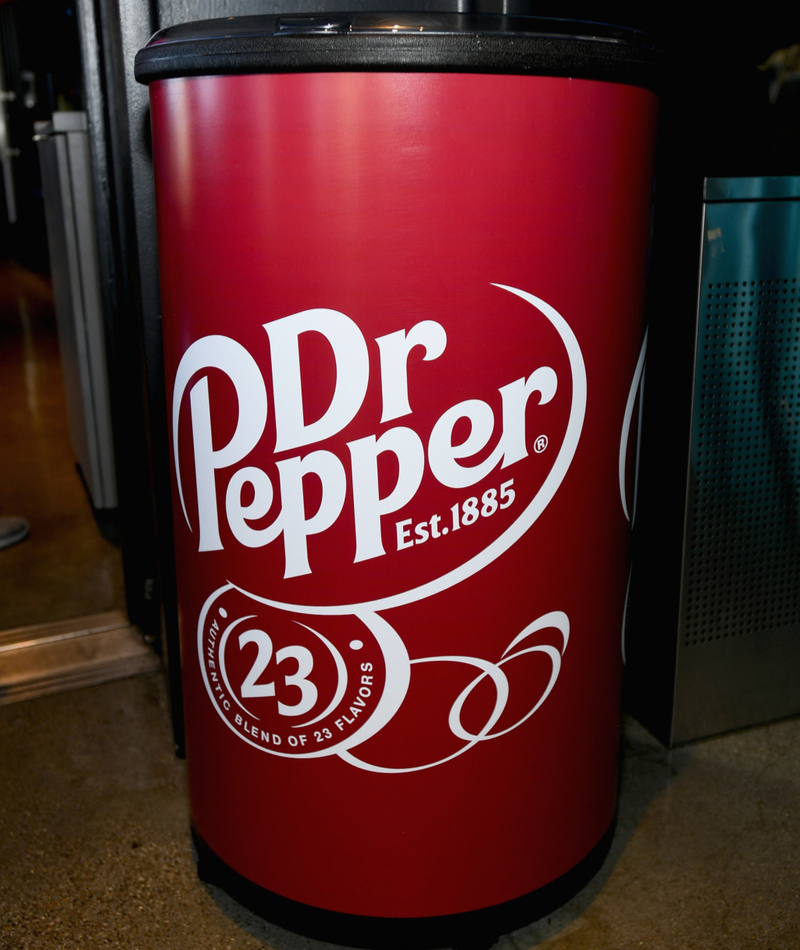
While all of the other teammates respond with an answer along the lines of "so good" etc, when it is Forrest’s turn to speak, because of the many Dr. Peppers he downed, he tells the president that he has to pee.
From Novel to Cinema
As always, it's challenging to adapt a novel into a film. Sometimes a lot gets cut in the end and Gump's story was no exception. Out of 24 chapters in the original novel by Winston Groom, the film only really focuses on eleven of them. Still, the production company had reservations about adapting the whole thing, fearing that it would be too close to Oscar-winning film Rain Man starring Dustin Hoffman.
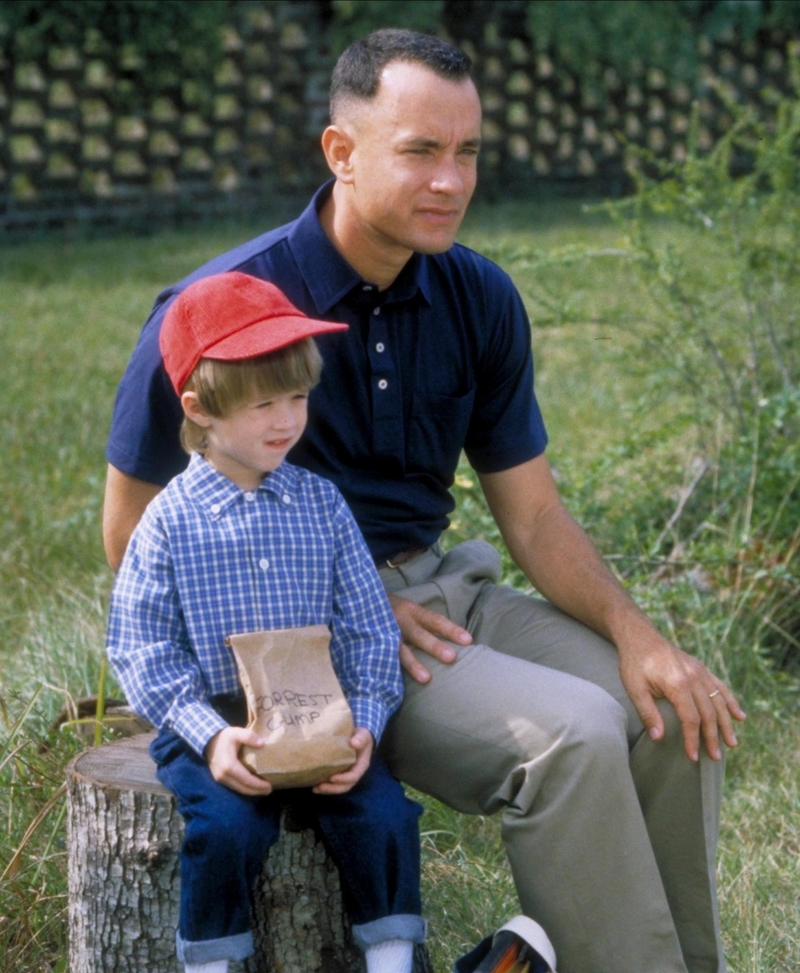
Warner Bros originally bought the casting right of Forrest Gump when it was still a script. They agreed to hand over Forrest Gump for the exchange of the screenplay to Executive decision, topping off the deal with $400,000 that they also paid to Paramount.
Authentic Jewelry
The necklace that Lieutenant Dan wears in the film was taken from Gary Sinise's brother-in-law, Jack Trese, who wore it in Vietnam in 1967-68. The necklace has the words “Protect Us In Combat” inscribed in it. Sinise himself has made a lot of effort to help veterans over the years. The actor even created his own foundation, The Gary Sinise Foundation to assist these brave men.
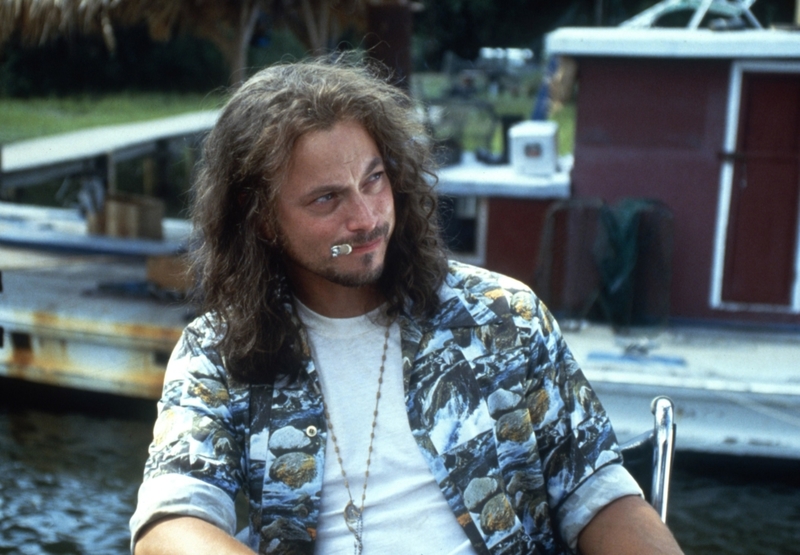
Through his charity, the Gary Sinise Foundation, $30 million is raised for veterans annually. Included in the foundation is also a housing project, in which they have built 54 smart homes for the badly wounded with 16 in the works. In 2013 he was even named an honorary Marine at Marine Barracks Washington, D.C.
The Gump Home
Hoping to visit the home of Forrest Gump? Unfortunately, you won’t be able to find it. The home was taken down after the film. You can, however, still see the place where they built it, because that is in fact, very real. The Gump property, as well as Jenny's farmhouse, was built in Alabama on the Bluff Plantation on Twickenham Road, just southeast of Yemassee, on the Combahee River between Varnville and Beaufort.
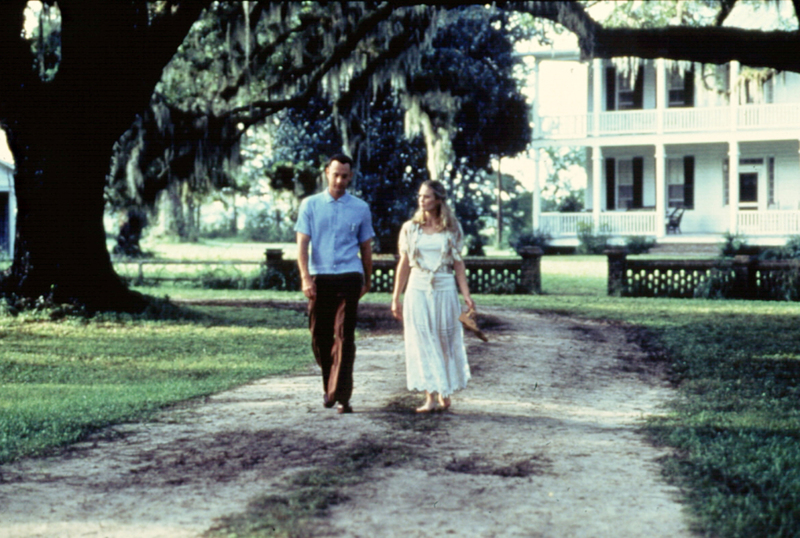
Ufnortaunetly it was only built only for the movie, and completely torn down after filming, but the house resembled a typical big old southern farm-style house. You can find these kinds of properties all over the south, especially in that region.
The Bus Stops Here
The bus stop scene was filmed in Chippewa Square in Savannah, Georgia. Savannah is the oldest city in the state of Georgia. The city was established in 1733 as a British colony, and later as the first state capital of Georgia. The city was also a strategic port city in the American Revolution and during the American Civil War.
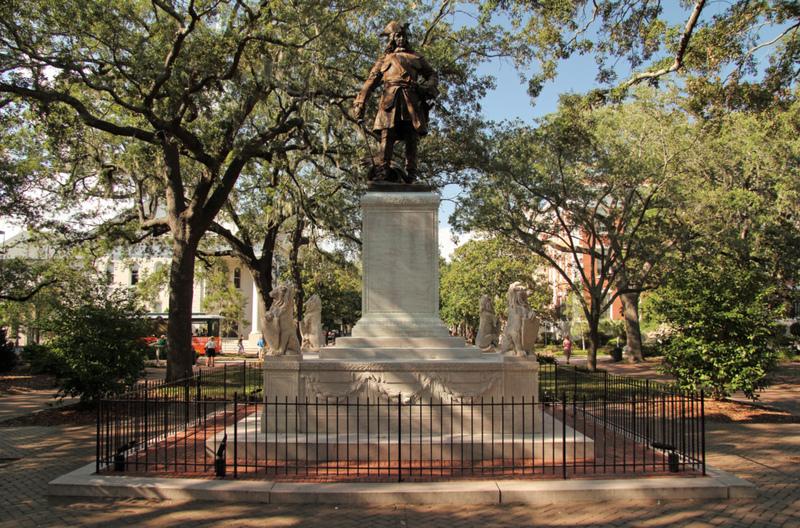
While Savanna is rich in history, tourists are drawn to the city more because of the film than anything else. You can even do a Forrest Gump tour of the city. Check out the museums where you will find the actual bench that they used in the film.
Chippewa Square
Understandably, this spot is now a huge tourist attraction in the city is Chippewa Square. Since the release of the film, thousands upon thousands of tourists have flocked to the square in memory of the film. The square has become a huge tourist attraction since the release of the film.
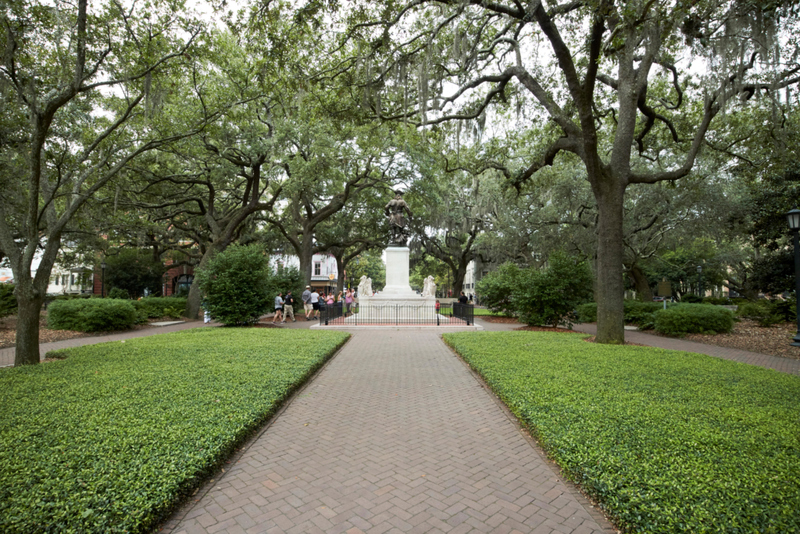
Fun fact: The traffic flow around Chippewa Square was reversed so that the bus door could open into the square. It sure did make for a picturesque scene.
Bubba Gump Shrimp
The film was a cultural phenomenon for America that inspired so many things. One of them was the restaurant chain, Bubba Gump. The shrimp restaurant franchise opened in 1996, just a couple of years after the film was released. While there is no connection to the film other than the characters' names Benjamin Buford "Bubba" Blue and Forrest Gump.

Since opening, the restaurant chain Bubba has grown considerably and has been serving customers across the U.S and around the globe including locations in Japan, Malaysia, Mexico, Indonesia, and China.
Scripts That Went Un-Used
The producers initially intended to use Groom’s script since he was the one who wrote the book. Unfortunately for him, in the end, it was scrapped, and they went with a version written by an actual screenwriter. And that writer was the incredibly Eric Roth.
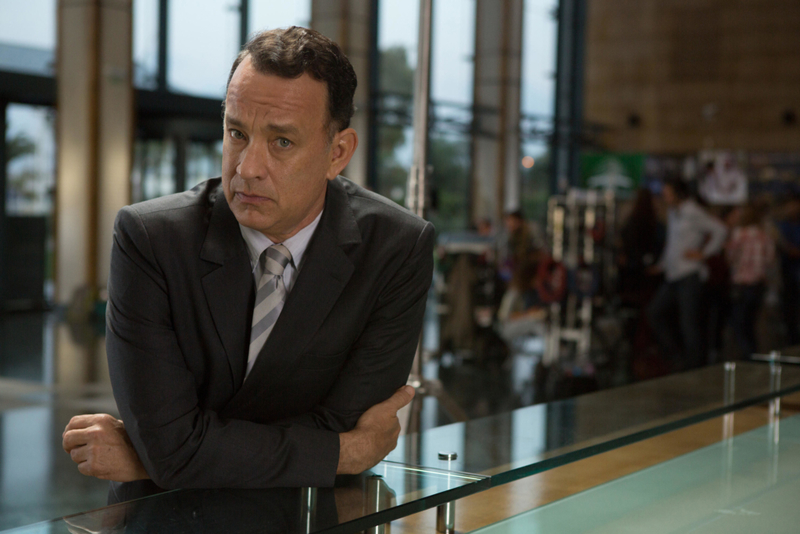
Roth, with the help of some additional screenwriters, wrote the final script for which he ended up winning an Oscar for Best Adapted Screenplay. Roth later co-wrote screenplays for The Insider, Munich, and The Curious Case of Benjamin Button.
The Famous Hurricane Scene
The boat hurricane scene was taken from the Port Royal S.C Ports Authority. Hurricane Carmen was an actual major Atlantic hurricane that made landfall on the U.S coast of the Gulf of Mexico in early September 1974 In the film, the hurricane destroys the shrimping industry of Bayou La Batre.
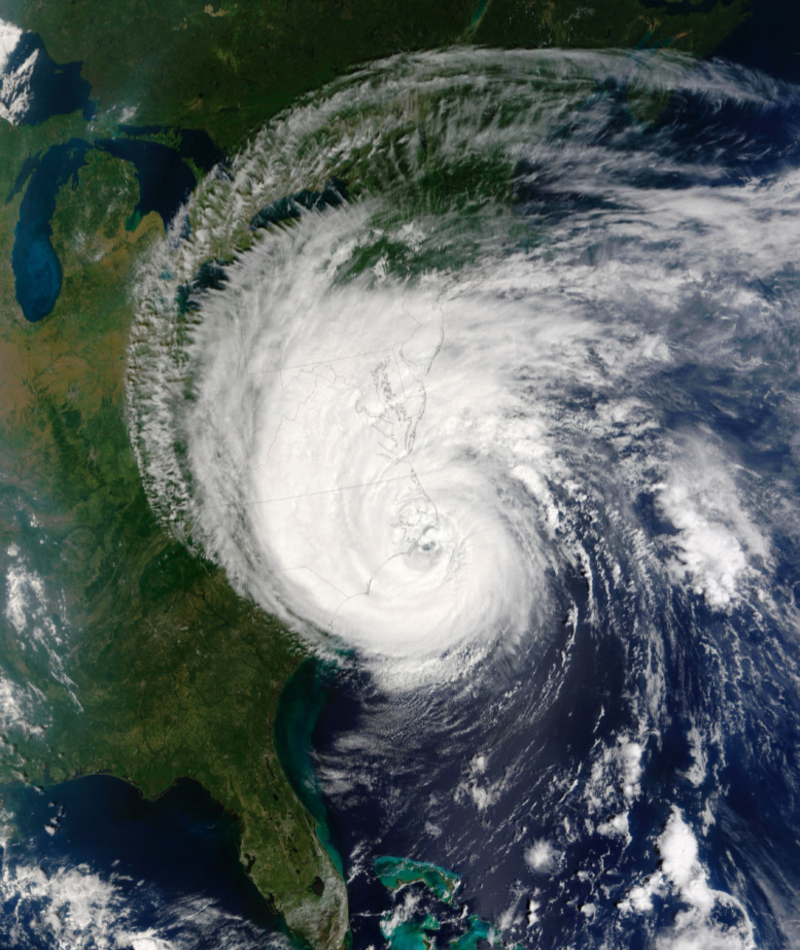
Forrest Gump’s boat, Jenny was at sea during the hurricane. While it suffered a blow, it wasn’t thrown to land like other boats and therefore, Forrest’s business started to prosper due to a lack of other competition following the hurricane.
The Original Book
While the movie was a huge success, the original book written by Winston Groom wasn't quite in that league in terms of numbers. The book originally only sold 30,000 copies. As we know, the film ended up making a pretty, pretty penny.

Following the release of the movie, 1.6 million copies were sold. Groom felt that he was cheated out of money. The company eventually agreed to pay Groom more than $1 million for the rights to the book’s sequel, Gump & Co.
Mixed Reviews
After the film was released, there were both fans and critics. While many people praised the movie for capturing such great historical milestones and how they connected to the loveable character of Gump, as well as the way it pulled on our heartstrings, many people were pretty against it.

There were critics out there who felt that film was overly sentimental, that it was filled with too many cheesy catchphrases. Some felt that it was a symbol of privilege, and some people simply hated it because inspired the name of a shrimp chain. Still, even with some backlash, on the whole, most people loved the film.
Apple Company
In the movie, Lieutenant Dan invests Gump’s money into Apple Inc. Viewers don’t know how much money was invested, however, it is safe to say that he would have earned millions of dollars down the road.
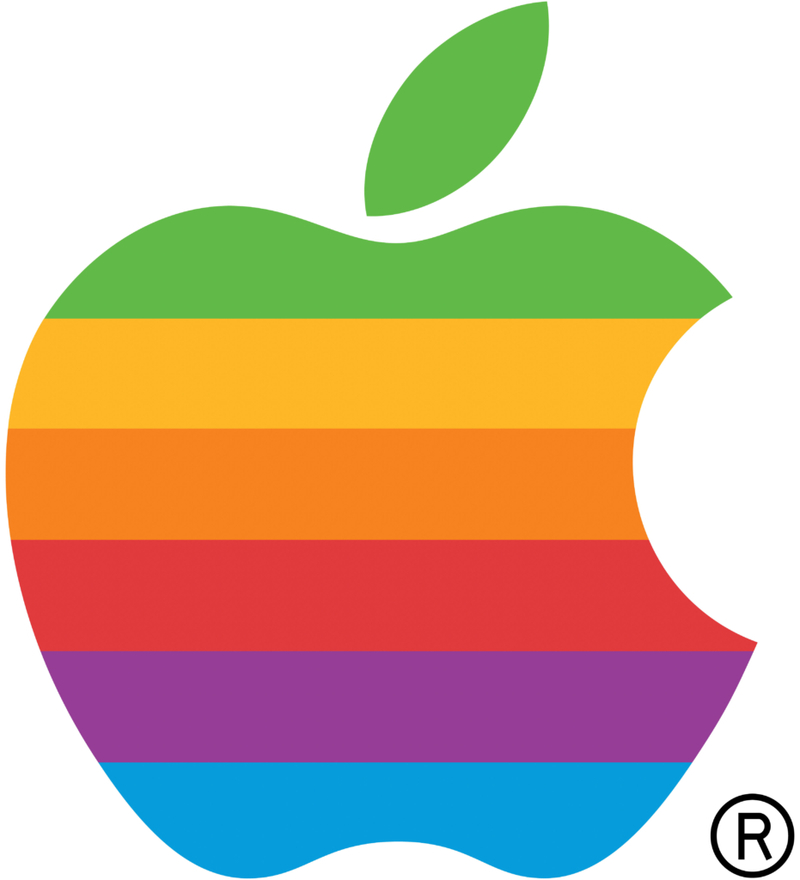
Apple today makes a profit of $1,444/per second - this is equal to $5.2 million per hour, $127 million per day, or $45.7 billion per year. I would say Forrest made some profit from his investment.
Sounds of Clinking Coins
Director Robert Zemeckis wanted the movie was to be released with sounds of loose change clinking in Gump’s pockets while he runs. However, the original movie was released without the sounds. An edited version was later released and included the sounds.

Sound editing is a huge part of filmmaking, so it's pretty strange how a version without the sound effects made it all the way to the cinemas. Luckily it was added later. While it seems like a small detail, it's the little things things that matter.
An Edited Version of Forrest Gump
Twenty years after the film’s release, a re-edited version of Forrest Gump came to theaters in honor of the anniversary. It's all the same Forrest but this time with a better and more enhanced viewing experience that today's technologies can allow.

Many fans rushed to see the new and improved version. Needless to say, if they loved it over 20 years ago, folks went crazy for it now. The sound was clearer and the picture sharper.
President Trump
There are always some crazy conspiracy theories out there, but this one sure does take the cake. Some people believe that the movie was created as a promotion for Trump. However, when he didn’t run for the presidency, the movie was edited to seem like it was telling a story.
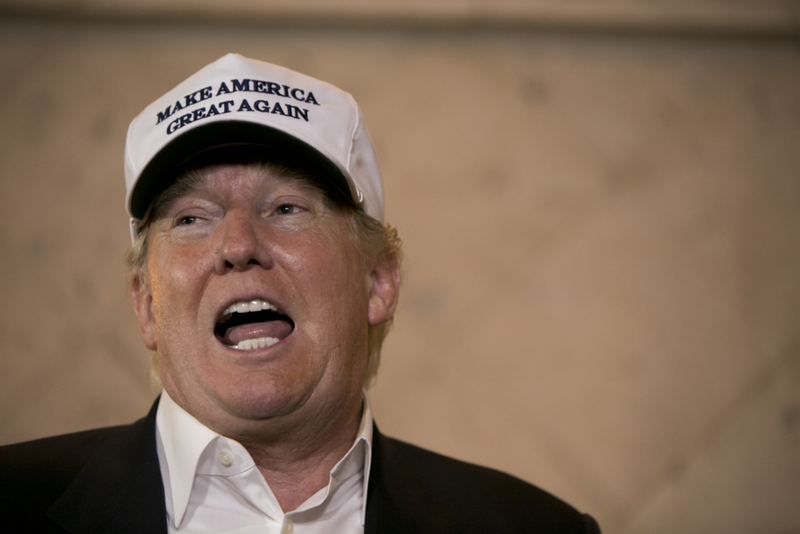
It would seem pretty absurd to think that he would know he would be running for president over 20 years prior to it happening, On the other hand, this is was a life-long dream of is. Who knows. What the message could mean? Well, that's anyone's guess!
Lots of Special Effects
There were many special effects used throughout the film, allowing Forrest to meet presidents who have been assassinated. This makes the movie look more realistic. Thanks to Ken Ralston and his team at Industrial Light & Magic, the movie had extensive visual effects, for which it later won an Academy Award for best visual effects.

The film used CGI techniques to depict Gump meeting deceased personages and to record voices of historical figures, voice actors were filmed and special effects were applied to alter lip-syncing for the new dialogue.
R.I.P Jenny
Jenny played Forrest’s lover and wife in the film. She was born in the year 1945 and died in 1982. Jenny is his childhood friend, with whom he falls in love right away. A victim of abuse during her childhood by her father, Jenny takes a different life path from Forrest, engaging in self-destructive behavior and getting involved in the 1970s/80s counter-culture. She appears in Forrest's life at different times in adulthood.

Jenny eventually settles down, becoming a waitress in Savannah, Georgia, where she lives in an apartment with her (and Forrest's) son, Forrest Jr. They eventually get married, but soon afterward she dies from complications due to AIDS, at least that is the widely believed story.
Gump’s Foot
The famous feather that effortlessly floats around, landing wherever it pleases, seems random, though, as we see at the end of the film, nothing is random, and every journey destination. Ironically, the feather which is meant to represent the life of Forrest ends up landing right where it should; next to our hero's foot.

This moment is said to represent the idea that Gump is now possibly aware of all the uncertainty life has to offer. It may also represent the hardships he experienced and overcame throughout his life. Maybe he is as light as a feather? That's the beauty of a movie, you can take whatever message you like.
How Jenny Died - Fan Theory
Jenny died in the film in the year 1982. She was a party girl who became part of the hippie movement in the 1960s and 1970s and got involved in the counter-culture. She eventually cleaned up her act and married Forrest but then relapsed again. Sadly, due to her reckless behavior, Jeny ends up contracting AIDS after Gump Jr, was born.

The big question is how her son and Forrest did not get it. Well, very simply, she contracted it after giving birth to her son, which automatically put them in the clear. That puts that theory to rest, and it also clearly stated in the script. Not everything is from the script, however. Sometimes actors brilliantly improvise some iconic moments. Here are some iconic quotes which were improvised by actors:
The Devil Wears Prada
For those who have seen this movie, you should be familiar with Meryl Streep’s character as magazine editor Miranda Priestly. Her ice queen persona was loosely based on Anna Wintour the notorious editor in chief of Vogue magazine, one of the world's most revered style magazines. In the film, Streep channeled her best Wintour and made cinema history with the line “Everyone wants to be us."

Streep drew critical praise for her performance as a powerful fashion magazine editor and received many award nominations including her record-setting 14th Oscar nomination and the Golden Globe for Best Actress in a Comedy or Musical.
Ghost
In this classic 1990 film, Whoopi Goldberg plays the role of a psychic who encounters the ghost, Sam, played by Patrick Swayze. Goldberg won an academy award for best actress in a supporting role and sure made the character her own. “Molly, you in trouble girl,” is a line she added to the movie’s script. She also proceeded to take home the BAFTA, Golden Globe, and Saturn Awards in addition to the Oscar.

Thanks to the actors in the film, which also included Demi Moore, Tony Goldwyn, and Rick Aviles, the movie was a huge success and grossed over $505.7 million at the box office. The film received nominations for five Academy Awards.
A Few Good Men
Jack Nicholson added his two cents to the movie’s script when he played the character colonel Nathan R. Jessup in this war film. Court-martial lawyer Daniel Kaffee (who was played by Tom Cruise) exposes Colonel Nathan R Jessup’s false testimony surrounding the death of a Marine named Santiago.
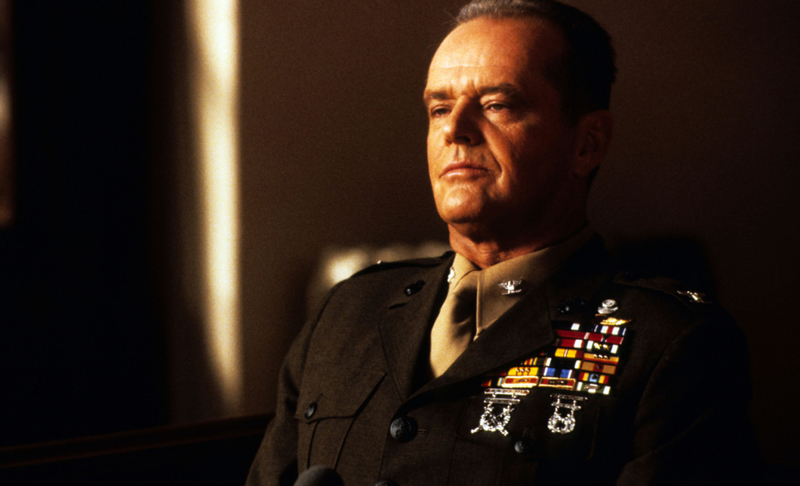
When pressed by Kaffee to tell the truth, he shouted: “you can’t handle the truth!” The quote is often used to deny somebody's information that has been deemed too sensitive. The scene has since been used in a number of T.V. shows as a parody, including in Season 5 Episode 14 of Seinfeld and in a Burger King commercial in 1998.
The Fugitive
Remembering all your lines proves to be not so easy a task! When Harrison Ford’s character is pointing a gun at Tommy Lee Jones’ character and saying “ I didn’t kill my wife” Jones forgets to say “that isn’t my problem.” Instead, he says “I don’t care.” The director loved it and went with it.

The film received seven Academy Award nominations including for Best Picture with Tommy Lee Jone taking home an Oscar for Best Supporting Actor. The film was subsequently followed by a 1998 spin-off, U.S. Marshals.
When Harry Met Sally
If you’re a rom-com lover, then you are most likely a fan of this 1989 comedy. The film follows Billy Crystal and Meg Ryans’ characters from the time they first encounter each other as car companions to New York City from college, their hours-long car ride together in n a cross-country journey, through twelve years of random encounters in New York City.

The film follows their friendship and their transition to lovers. While the story is scripted, some moments were ad-libbed. Did you know that Billy Crystal made up this line on the spot? “I would be proud to partake of your pecan pie.” Meg Ryan thought it was hilarious and they kept it in the film.
Midnight Cowboy
Sometimes extras find their own ways into movies. Take this film, when Jon Voight and Dustin Hoffman were crossing a road, a taxi driver who missed the sign “street closed for filming” almost ran the two over. While that sounds like a scary ordeal, what Hoffman did was iconic.
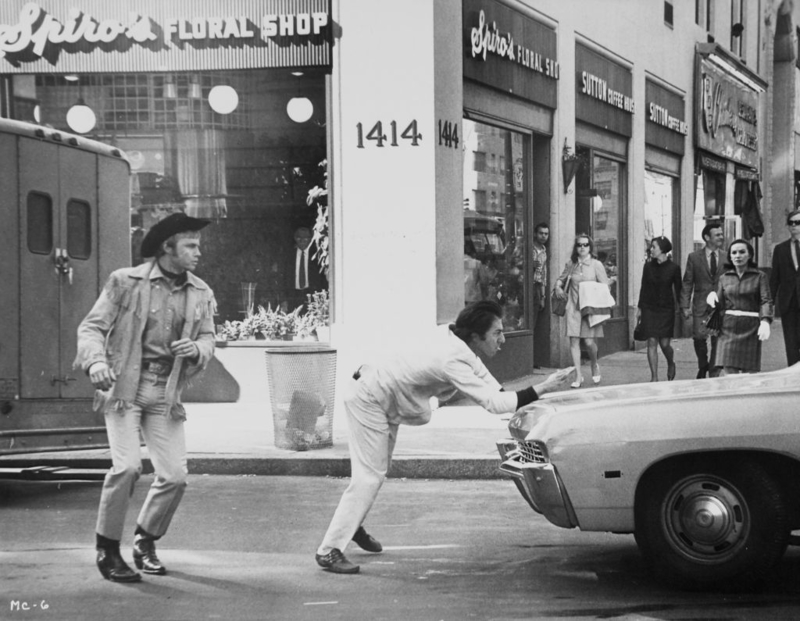
Hoffman screamed, “I’m walking here.” The actor says about the line that there were many takes to hit the traffic light just right so that they wouldn’t have to pause while walking. They finally nailed the perfect take, but a cab appeared out of nowhere and almost hit them. The line was kept in the film and reached number 27 on AFI’s 100 Years… 100 Movie Quotes.
The Godfather
In the scene where Richard Castellano’s character, Don Corleone, almost gets assassinated by Paulie Gatto, two of Don’s assistants kill Gatto. Castellano was supposed to say “leave the gun” but added in “take the cannoli,” which became a classic line.
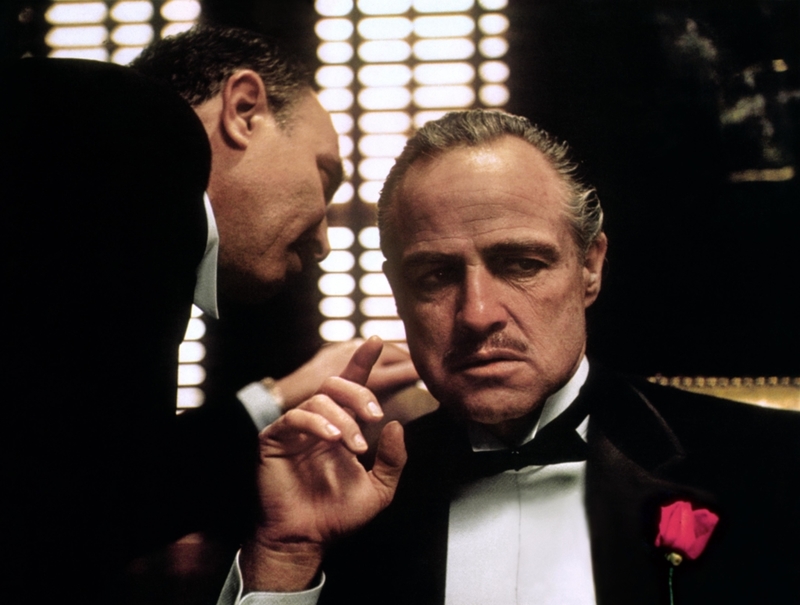
The film itself became a classic and is widely regarded as one of the greatest films of all time. It was the highest-grossing film of 1972 and for a while the highest-grossing film of all time. It won several Oscars including Best Picture, Best Actor, and Best Adapted Screenplay. It also was nominated for seven other awards.
Casablanca
Have you heard the line “here’s looking at you, kid?” This line comes from this film and was said by Humphrey Bogart. But did you know that this line wasn’t even originally in the script? He used this line in the film after saying it while teaching Ingrid Bergman poker in between takes. But what does it actually mean? The phrase supposedly means that Rick will always be looking out for Ilze.

Even if they two never see each other again, she will forever remain in his heart. The line was voted the fifth most memorable line in cinema in AFI’s 100 Years… 100 Movie Quotes. No surprise there! People have been quoting it for years.
The Dark Knight
The late Heath Ledger made this film his own. While playing the villain in the film, he gave Commissioner Gordon (Gary Oldman) sarcastic claps after he was promoted, an action that wasn’t originally part of the script. Movie critics consider the film one of the best films of the early 2000s and one of the best superhero films of all time.
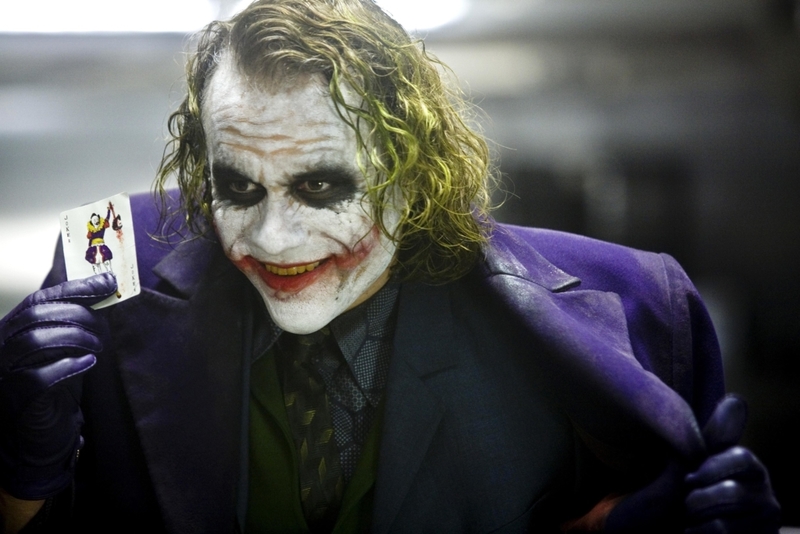
It grossed over $1 billion worldwide and is the 36th highest-grossing film of all time. It was nominated for eight Academy Awards and won two; Best Sound Editing and the late Heath Ledger was posthumously awarded Best Supporting Actor. The film set the standard for "The Joker" a role that is now one of the most coveted characters in Marvel.
Deliverance
In this movie, things quickly turn dark as a group of friends travel in the wilderness and are chased by a gang of hillbillies. When one of the attackers yells the line “squeal like a pig” and in turn, starts to squeal, this was entirely made up on the spot by the actor. Several people have received credit for the phrase. Ned Beatty claims that he thought of it while he and McKinney were improvising the scene.

The director of the film, John Boorman, however, said that the line was used because the studio wanted the scene to be filmed in two ways: one for the movie release and one which would be appropriate for television. Boorman did not want to do that so he decided that the phrase "squeal like a pig", suggested by Rabun County liaison Frank Rickman, was a good substitution for the original lines in the script.
Good Will Hunting
While Ben Affleck and Matt Damon may have been recognized as the writers of this script, it was the late Robin Williams who created the most memorable line of the film as psychiatrist Sean Maguire. In one of the last scenes, he reads a letter that Damon’s character wrote to him.

One of the lines was “I gotta see about a girl.” He added in “son of a b*tch. He stole my line.” Unsurprisingly, the film received nominations for nine Academy Awards and won two of them; one for Best Supporting Actor for Williams and one for Best Original Screenplay for Affleck and Damon.
Being John Malkovich
Sometimes actors get out of hand and it leads to a pleasant surprise. In the surreal comedy Being John Malkovich, someone threw a can at John Malkovich’s head and shouts “Hey, Malkovich! Think fast!” The scene panned out perfectly because according to director Spike Jonze, the director of the film, this moment wasn't at all in the script and actually happened because some extras got drunk got overboard.

The extras dropped the F-Bomb and also hurt Malkovich’s head pretty bad. But it was all in the name of art, so they were happy with the outcome and kept it in the final cut. The American fantasy comedy-drama was packed with other talented actors including John Cusack, Cameron Diaz, Catherine Keener, and Charlie Sheen.
The Usual Suspects
The Usual Suspects tells the story of the interrogation of Roger "Verbal" Kint, a small-time con man, who is one of two survivors of a massacre and fire on a ship docked at the Port of Los Angeles. Through various flashbacks and narration, Kint shares with the interrogator an elaborate series of events that led him and his criminal companions to the boat, and of a perplexing crime lord—known as Keyser Söze—who controlled them.

This movie has some major twists, so it was important for actors to stick to the script. However, in the line-up scene, actors were given the go-to to act as they wished. This made way for a hilarious scene and improv, during which one character even passed gas. Also in the scene, Benicio Del Toro slurred his words and the cop requested from him, “in English please.”
Goodfellas
This is one of the most popular gangster movies ever with great actors. Amongst the cast are Robert De Niro, Joe Pesci, and Ray Liotta. It was Pesci who stole the show when his character Tommy got extremely defensive after being referred to as a “funny guy.” The improvised line “Do I amuse you?” has since become a classic. The line is based on an actual event that Pesci witnessed.

According to Pesci, improvisation and ad-libbing came out of rehearsals where director Scorsese allowed the actors to do whatever they wanted. He made transcripts of these sessions, took the lines the actors came up with that he liked best, and put them into a revised script that the cast worked from.
The Silence Of The Lambs
Hannibal delivers a monologue to Jodie Foster about eating a human liver with “fava beans and a nice Chianti in this iconic thriller. He adds in his own iconic hissing sound. Hannibal was played by the great Anthony Hopkins for which he won an Academy Award for Best Actor.

Hopkins also won three BAFTA Awards, two Emmys, and the Cecil B. DeMille Award. In 1993, he was knighted by the late Queen Elizabeth II for his contribution to the arts. Finally, he was awarded a star on the Hollywood Walk of Fame in 2003.
Taxi Driver
The iconic line “You talkin’ to me?” comes from this classic. This Martin Scorcese film didn’t originally have this line in the script, but Robert De Niro ad-libbed it and they loved it. In 2005, the quote was ranked number 10 on the AFI’s 100 years… 100 Movie Quotes. The film follows the life of Travis Bickle, a 26-year-old former U.S. Marine who is lonely and depressed, living on his own in New York City.

In order to deal with his insomnia, he starts to work as a taxi driver while also frequenting porn theaters on 42nd street. It is no surprise that De Niro’s performance in the film is considered one of the best in cinematic history. Likewise, the film is regularly regarded as one of the greatest films of all time by critics, film directors, and viewers.
The Warriors
In this movie classic, David Patrick Kelly, who played the role of Luther, adlibbed the most iconic line of the movie: “Warriors, come out to play!” The creators loved Kelly’s improvisation and kept it in the final cut. The film tells the story of a New York City gang member.
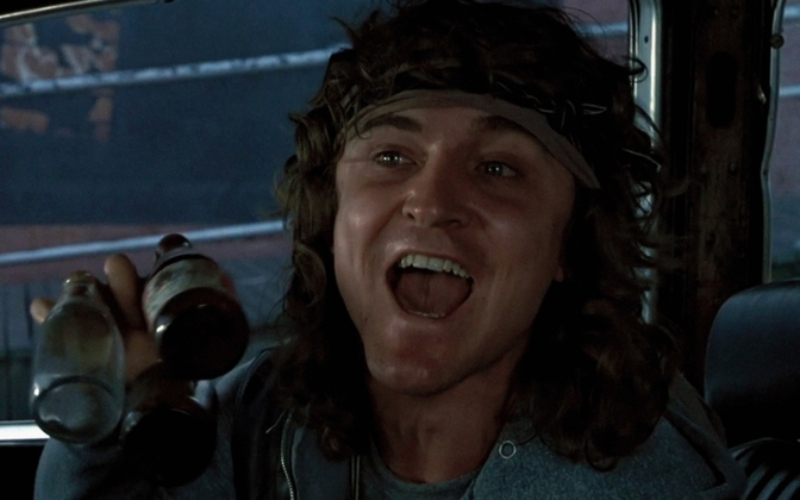
After he discovers that he was framed for murder, Luther understands that he must travel 30 miles from the north end of The Bronx to their neighborhood in Coney Island for the murder of an honorable gang leader. Since its release in 1979, it has amassed a cult following and has influenced multiple spin-offs including video games and a comic book series.
Apocalypse Now
Marlon Brando played Colonel Kurtz in this adaptation of Joseph Conrad’s Heart of Darkness. The 1979 warm film was directed and produced by Francis Ford Coppola. Brando improvised over 18 minutes of dialogue in this film. He folded his script into a hat, placed it on his head, and refused to memorize his lines. Great actor or difficult? You decide
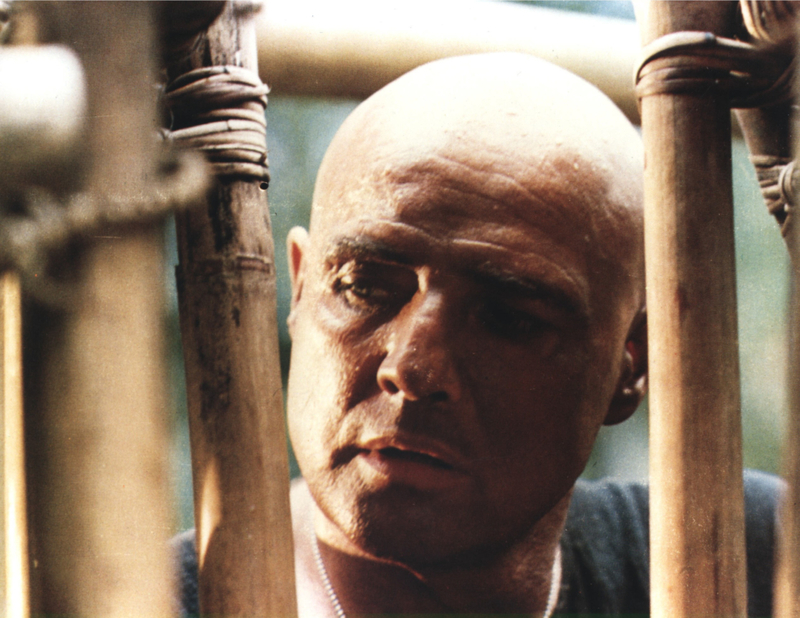
Apparently, the film experienced numerous problems during its production. Marlon Brando was overweight and very unprepared for the role. Martin Sheen also had a breakdown and a near-fatal heart attack while filming. Nonetheless, the film was quite successful and received several award nominations.
Blade Runner
One of the most iconic scenes in movie history ironically didn't involve the star of this film, Harrison Ford. Actually, Rutger Hauer who played Roy Batty, the enemy of the film, performed a monologue known as the “Tears of Rain” speech, which he largely improvised.

The monologue was improvised by Hauer the night before filming and is frequently quoted. The film has since influenced many other science fiction films, video games, anime, and television series and has made Philip K. Dick’s work famous.
Jaws
In this Steven Spielberg classic, Roy Scheider plays Chief Martin Brody. While warning his partners aboard the ship he improvised his line “You’re gonna need a bigger boat.” The film tells the story of a man-eating great white shark which attacks beach visitors on Amity Island, a fictional resort town.

Chief Martin Brody comes to hunt it along with marine biologist, Richard Dreyfuss, and a professional shark hunter, Robert Shaw. The line is today considered one of the most famous lines in cinema history. Jaws of course went on to win multiple Academy Awards.
Raiders Of The Lost Ark
In the scene where Harrison Ford as Indiana Jones was chasing Marion Ravenwood and runs into a bad guy, he was supposed to take him down in a long drawn-out fight. However, Ford had a cold and didn’t want a long fight scene. So, he pulled out his gun and took him down in one shot, becoming a very memorable scene in the film.

The film was the first film in the Indiana Jones film franchise. Harrison Ford plays archaeologist Indiana Jones, who fights a group of Nazis searching for the Ark of the Covenant. It was nominated for eight Academy Awards in 1982.
Willy Wonka and the Chocolate Factory
Gene Wilder added a lot to this classic, there were many lines that weren’t originally in the script. He agreed to star in the film under the condition that he could decide how he made his grand entrance. He chose to enter limping with a cane and then drop the cane and somersault. His reasoning?

“From that time on, no one will know if I’m lying or telling the truth,” Wilder received a nomination for a Golden Globe for Best Actor in a Musical or Comedy. The film was also nominated for an Academy Award for Best Original Score.
RoboCop
Improvisations can have a great impact on other characters, as they don’t know what’s coming. When Kurtwood Smith’s character, Clarence Boddicker, is taken into custody, to other actors’ surprise, he says the line “Give me my f***in’ phone call!” The actors were shocked, which is exactly the effect that Smith and director Paul Verhoeven aspired for.

The movie takes place in crime-ridden Detroit, Michigan in the near future. Police officer Alex Murphy, played by Peter Weller, is murdered by a gang of criminals and later revived by the megacorporation Omni Consumer Products (OCP) as a superhuman cyborg law enforcer known as RoboCop.
A Clockwork Orange
In a futuristic Britain, Alex DeLarge is the leader of a gang. One night, after getting inebriated on drug-laden "milk-plus", they participate in an evening of "ultra-violence", which includes a fight with a competing gang led by Billyboy. After not being happy with a number of takes, Stanley Kubrick told Malcolm McDowell, who played the character, Alex, to do whatever he wants.

This welcomed the stunning improvisation of McDowell who started to sing “Singing in the Rain” during a terrifying scene, making him seem all the more crazy.
Saving Private Ryan
In this classic Steven Spielberg war movie, during a scene in which Tom Hanks as Captain Miller and Matt Damon as Private Ryan talk about their lives at home, Matt Damon completely makes up the story about catching his brother kissing a girl. The film received critical acclaim and praise was given to Spielberg for his directing while the actors, particularly Tom Hanks were recognized for their performances.

The film was the second-highest-grossing film of 1998 worldwide. The film’s success once again was confirmed by the 71st Academy Awards, in which it received 11 nominations and won five of them including Spielberg's second win for Best Director, Best Film Editing, Best Cinematography, Best Sound Mixing, and Best Sound Editing.
This Is Spinal Tap
This hilarious comedy about the made-up rock band Spinal Tap was full of improvisations, so much that the three lead actors received credit for writing the film. Rob Reiner recorded hours of improvised lines, and it proved to be difficult to cut the footage down.

The improvisation actually started years before in the late 1960s when Michael McKean and Christopher Guest first met during college and played music together. They worked with Harry Shearer and Rob Reiner on a TV pilot in 1978 for a sketch comedy show called The TV Show, which featured a parody rock band called Spinal Tap. During the production of the sketch, McKean and Guest began to improvise, and thus came to life the characters that became David St. Hubbins and Nigel Tufnel.
Dr. Strangelove
This satire covers the paranoia surrounding the threat of nuclear war. Otherwise known as How I Learned to Stop Worrying About The Bomb, the script was made up of a collection of ad-libs put together over time. Of these improvs was Peter Sellers’ Dr. Strangelove’s inability to control his right arm, which naturally became a Nazi salute
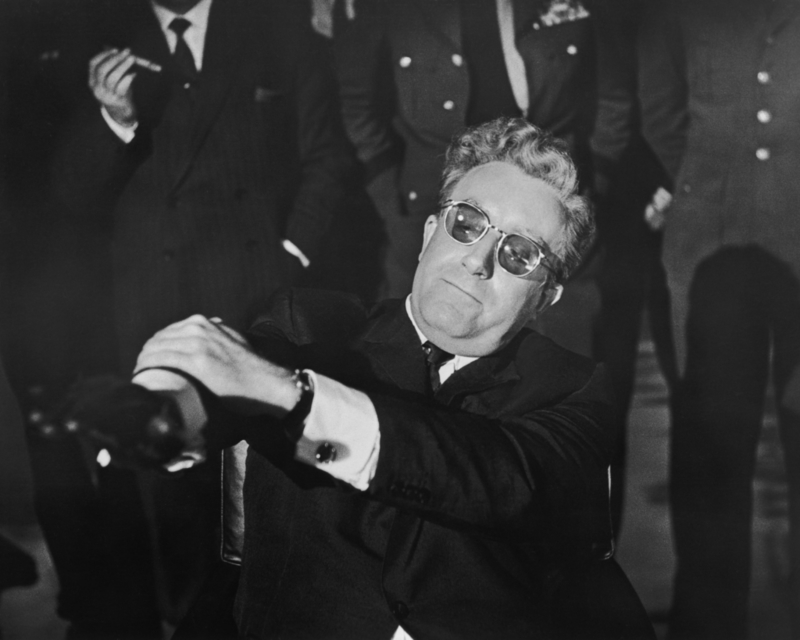
Sellers is noted for improvising a lot of his dialogue, with co-writer Stanley Kubrick adding the ad-libs into the written screenplay so that his improvised lines became part of the official screenplay, a practice known as retro scripting.
Zoolander
In this classic comedy, Ben Stiller plays Derek Zoolander, a dimwitted, narcissistic male model who becomes duped by corrupt fashion executives who are plotting to assassinate the Prime Minister of Malaysia. Stiller brilliantly improvises by repeating a line he had previously recited “Why male models?” He hadn’t planned on repeating the line, but it made his ridiculous persona even more foolish.
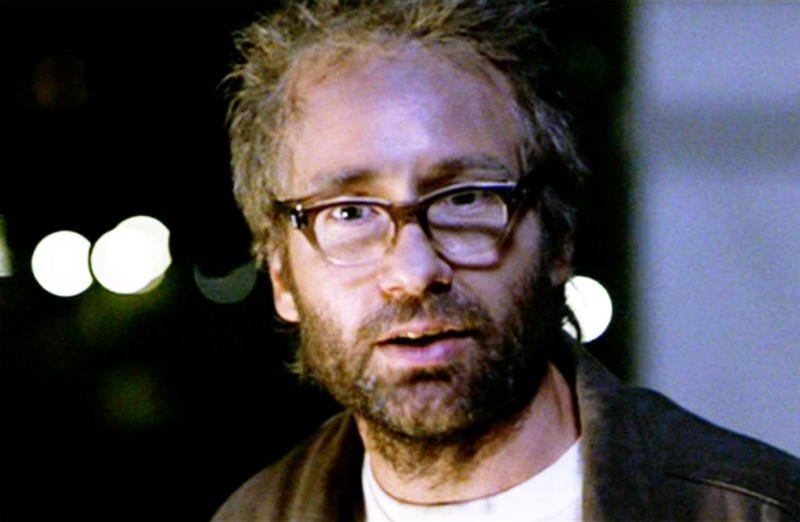
David Duchovny, being the talented actor he is (he played the character, J.P. Prewitt) totally went with it. While Zoolander 2 was less of a success, that scene is undoubtedly one of the funniest moments in the film.
The Shining
In this Stanley Kubrick adaptation of Stephen King’s novel, starred in by Jack Nicholson, a haunted hotel comes to life. Danny writes "REDRUM" on the outside of the bathroom door in the family's living quarters. When Wendy sees the word spelled in reverse in the bedroom mirror, the meaning of the word is disclosed to be "MURDER".

Jack begins chopping through the quarters' main door with a firefighter's ax. Jack breaks through the bathroom door, shouting "Here's Johnny!", but retreats after Wendy cuts his hand with a butcher's knife. The line is a reference from The Tonight Show with Johnny Carson. It wasn’t originally part of the script.
The Empire Strikes Back
Harrison Ford’s improvisation here was nothing short of genius. When Princess Leia and Han Solo are split up by Darth Vader, they kiss and Leia professes her love to Han. Ford replies to Leia’s “I love you” with an “I know.”

The film is now recognized as one of the greatest films of all time. It was at #3 on Empire's 2008 list of the 500 greatest movies of all time. To date, the film has earned more than $538 million worldwide from its original run and several re-releases.
Young Frankenstein
The 1974 comedy horror film was directed by Mel Brooks and was a box office hit. It is frequently recognized as one of the greatest comedy films of all time. Marty Feldman played the role of Igor. He ad-libbed the line ‘what hump?” while moving around the hump on his back whenever Doctor Frankenstein asked him about it. Although not originally included in the film, the director chose to keep it in.

The scene got so many laughs, both on set and eventually in the theater, proving that this improvised moment was totally gold. The line was written by the legendary comic Gene Wilder who had written the role specifically for Feldman.
Animal House
College Dean Vernon Wormer sets off to eliminate the entire Delta Tau Chi Fraternity. However, there are other plans set out for him. One of the things which makes this 1978 American comedy film so hilarious is its improvisation. In the cafeteria scene, Belushi improvises the entire scene. He takes food, stuffs it in his mouth, pushes his cheeks together, and says “I’m a zit-get it?”
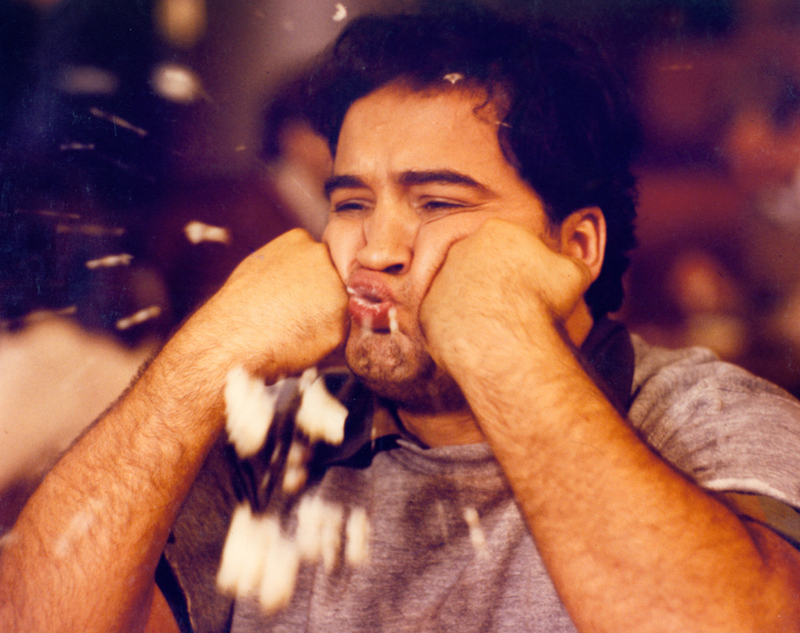
Of course, impersonating a zit by stuffing food into your mouth and punching it out of your cheeks with two fists is a good reason for big laughs, and the late SNL legend Belushi was always an expert at getting the laughs.
Dumb and Dumber
This classic 90’s comedy, Dumb and Dumber is a film about two seriously dimwitted pet stylists, buddies, roommates, and business owners named Harry and Lloyd. The two end up at the airport and encounter a woman (named Mary Swanson) with who Llyod falls completely in love.
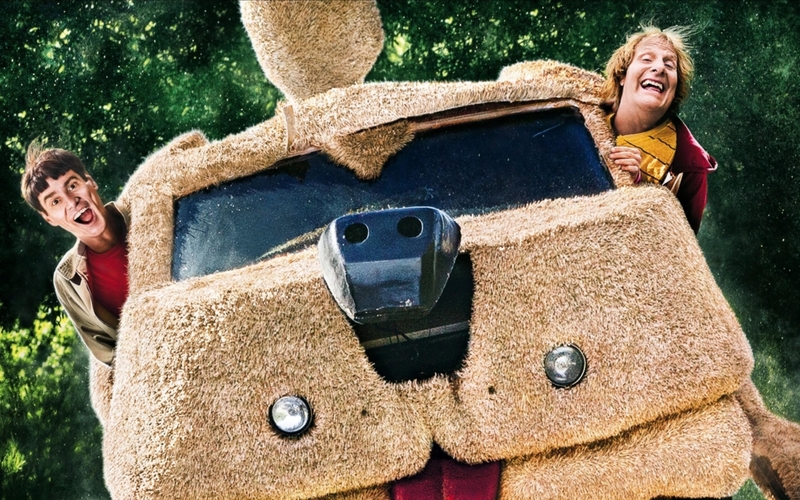
Fifteen percent of the film is made up on the spot as well as their road trip scene in which they play tag and argue like children. The movie has since developed a major cult following. When they notice that she leaves behind her suitcase, they decide to tale a road trip to Aspen to deliver the luggage she left behind.
The Lord of the Rings: The Fellowship of the Ring
The Lord of the Rings: The Fellowship of the Ring Viggo Mortenson, playing the character Aragorn, thinks his friends Merry and Pippin are dead. He kicks a helmet in disappointment and screams in agony. His scream was purely authentic, as he actually broke his toe. The take was used in the film.

The 2001 fantasy adventure film was directed by Peter Jackson and based on the first volume of J. R. R. Tolkien's The Lord of the Rings. It grossed over $871 million worldwide and became the second highest-grossing film of 2001 in the world.
Harry Potter and the Chamber of Secrets
Harry dines at the Weasleys house while the Weasley parents argue about their children. Molly is angry that they took out the enchanted car while her husband Arthur is quite supportive. The next line was practiced 13 or 14 times, with each time being different from the former.

They eventually went with “what exactly is the function of a rubber duck?” The film adaptation of the novel was released in 2002 and became at the time the seventh highest-grossing film ever.
Ghostbusters
Ghostbusters was a classic and featured some of the best cast members of Saturday Night Live. No wonder it's one of the funniest cult classics of our time. One of the funniest actors was Rick Moranis. The actor was also on the improv show, Second City Television, which means he was a master of improvisation.
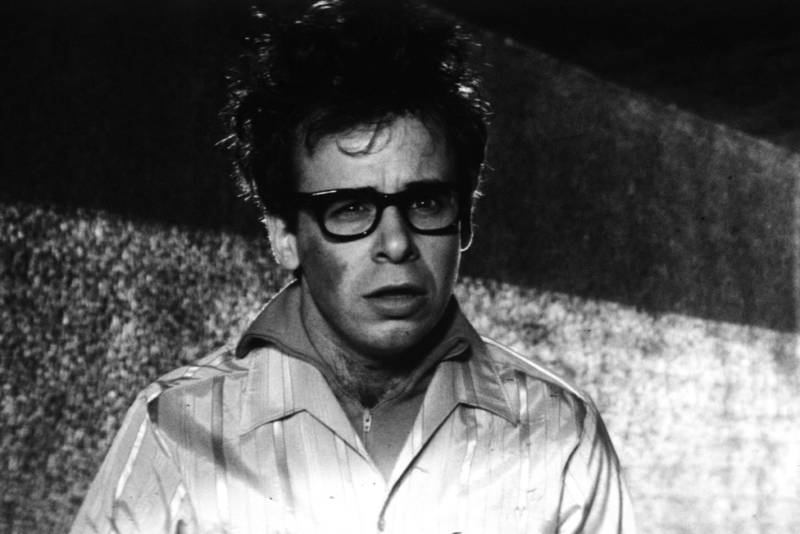
He is known for doing impressions of Woody Allen, Merv Griffin, and David Brinkley. So it’s no surprise that he so effectively improvised in the 1984 supernatural comedy film. He completely made up his speech to party guests on the spot.
Caddyshack
This classic 80’s comedy is so funny because of its improvised lines. Bill Murray improvised his Dalai Lama speech completely, and in his Cinderella Speech, the only scripted line he was given was “Carl cuts off the tops of flowers with a grass whip.” The rest he made up. The film has garnered a large cult following and has been regarded by Time and ESPN as one of the funniest sports movies ever.

Like some of his costars, Bill Murray honed his skills in improv on Saturday Night Live, where he gained recognition for funniest sketches of those seasons. It certainly helped that fellow castmember and Caddyshack star, Chevy Chase was there for all the good banter and riffing.
Knocked Up
Seth Rogen prepares for fatherhood in this 2007 comedy, directed by comedy guru Judd Apatow. Rogan and co-stars improvised many lines, including the beginning referencing Steven Spielberg’s Munich. INn a scene in Knocked Up Rogan and Rudd are childishly messing with each other. Pete (Rudd) says, "Know how I know you're gay?" the two of them go back and forth, repeating the line and filling in the blank with a comedic response.

The two actors first thought of the idea while on the set of 2005's The 40-Year-Old Virgin in a 30-second scene and then decided to bring the joke to Knocked Up. Judd Apatow, who was the director and screenwriter for both projects, put full trust in the guys and gave them the freedom to do what they wanted.
Aliens
When one thinks of improvising, we often tend to think of the comedy element and all the ridiculous things you say when you're just let your mind run free. But in this 1986 Aliens sequel, a heavy sci-fi, Sigourney Weaver’s character is awoken from hypersleep. Bill Paxton plays the role of Private Hudson.

Paxton improvised many of his lines including the iconic, “Game over, man! Game over!” His acting and improvisational skill earned him real critical acclaim that he ended up winning the Saturn Award for Best Supporting Actor.
Tootsie
In another classic actor, Bill Murray film plays the character of Jeff who is Dustin Hoffman’s roommate. Director Sydney Pollack wanted Bill Murray to perform a monologue and none of the characters knew what he was going to say. Murry delivered his lines from total imagination and completely pulled it off.

The film was a huge success (a financial one as well!); it was the second most profitable film of 1982. It was nominated for a whopping ten Academy Awards including Best Picture. Lange was the only winner and took home the award for Best Supporting Actress.
The Third Man
Orson Welles improvised the most widely quoted line of the film. In the famous scene, Lime meets with Martins on the large Ferris wheel in the amusement park. Looking down on the people below from where stands, Lime compares them to dots, and says how insignificant it would be if one of them or a few of them "stopped moving, forever".
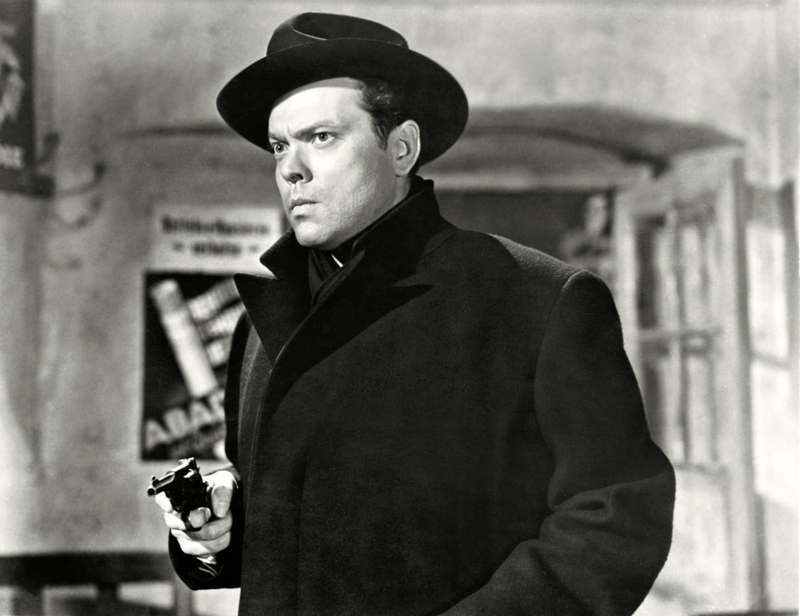
He later notes: “In Italy for 30 years under the Borgias, they had warfare, terror, murder, bloodshed. They produced Michelangelo, Leonardo da Vinci, and the Renaissance. In Switzerland, they had brotherly love, five hundred years of democracy and peace. And what did that produce? The cuckoo clock.”
Pretty Woman
This is one of Julia Roberts’ most iconic movies. The romantic comedy centers on the emerging relationship between a Hollywood sex worker, Vivian Ward (played by Roberts), who is hired by Edward Lewis, a wealthy businessman, to be his escort for business and social functions.
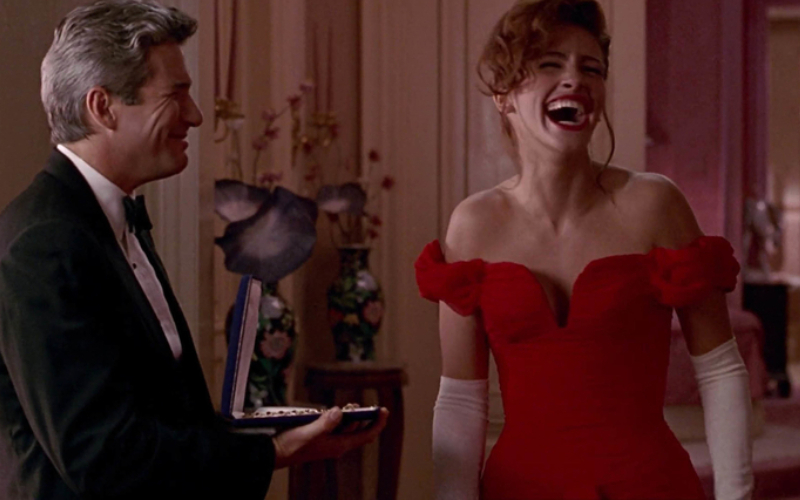
In the scene where Richard Gere’s character Edward Lewis shows Robert’s character Vivian a box with a necklace inside, Vivian touches it, and he shuts the box closed, startling Roberts. The scene was a practical joke on Roberts.